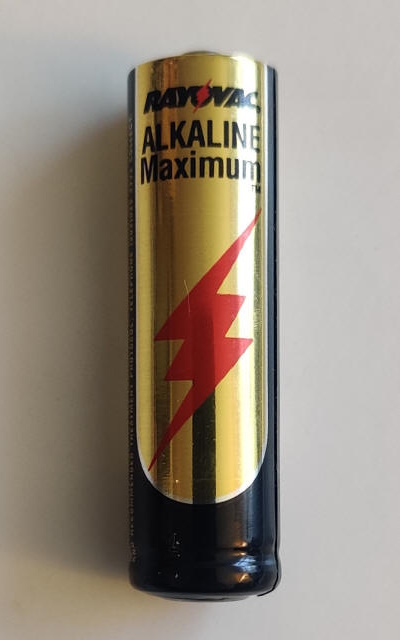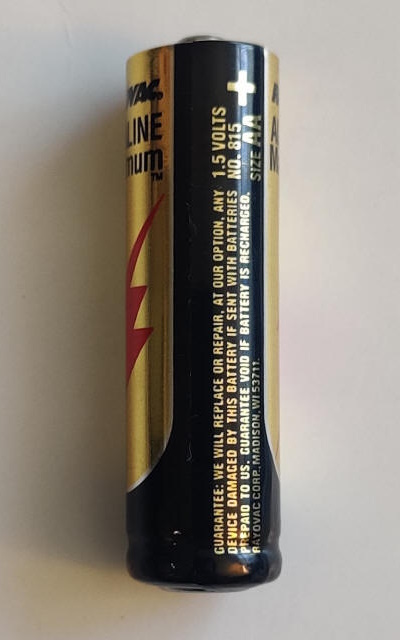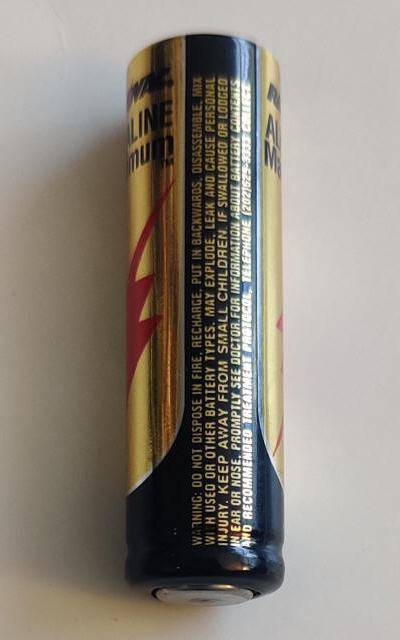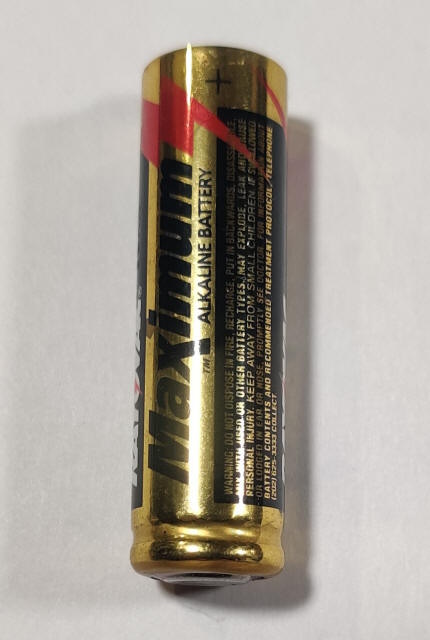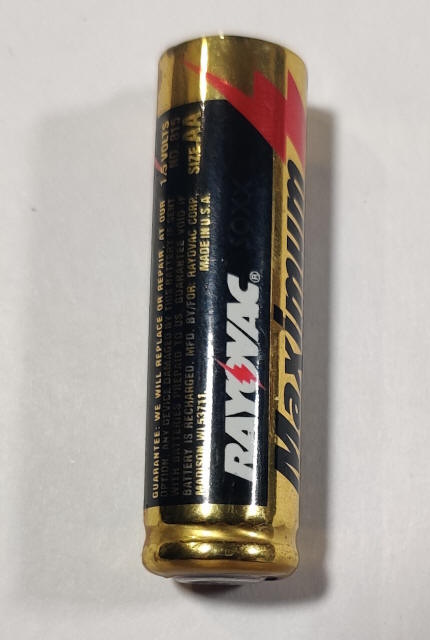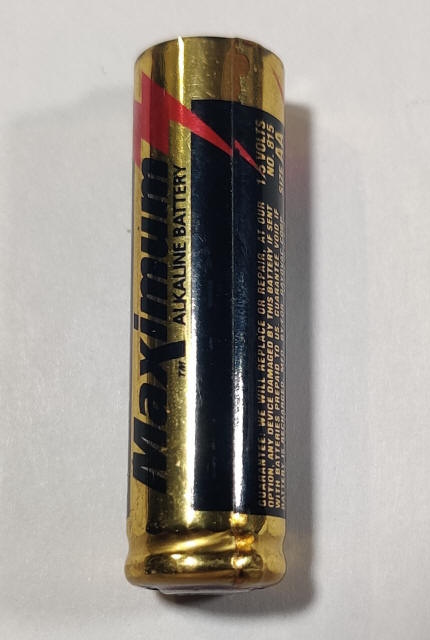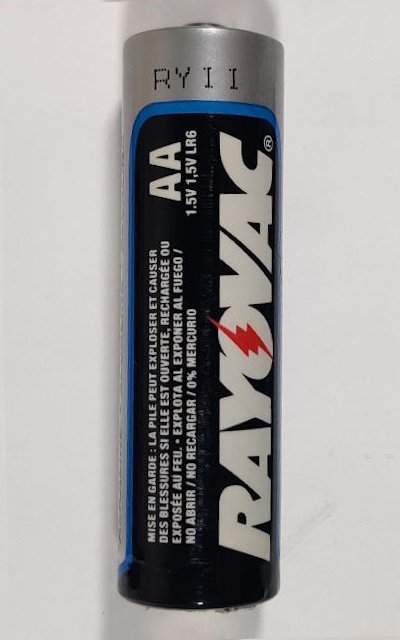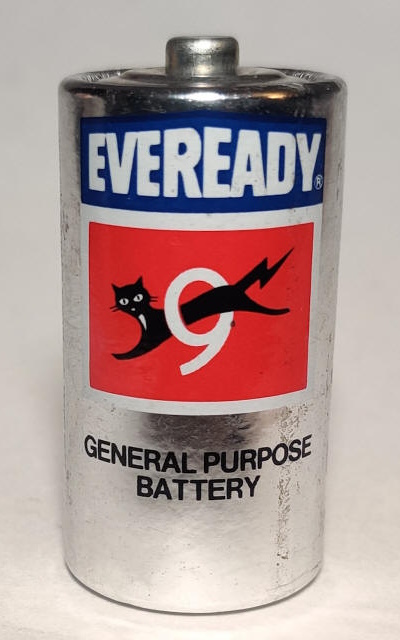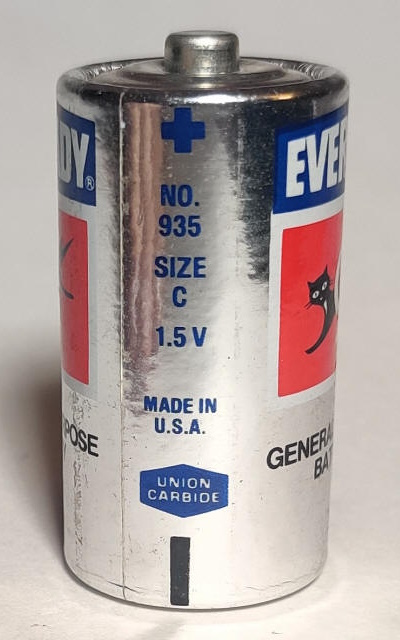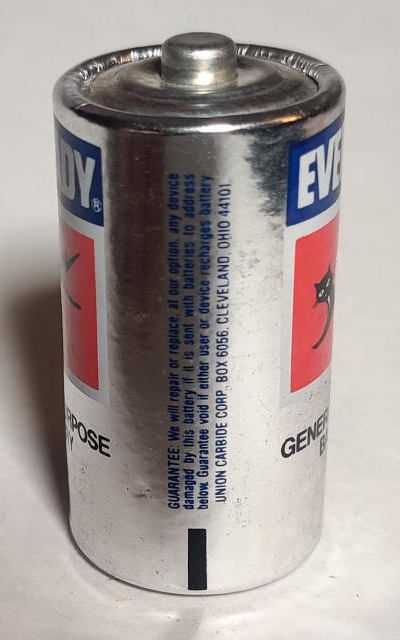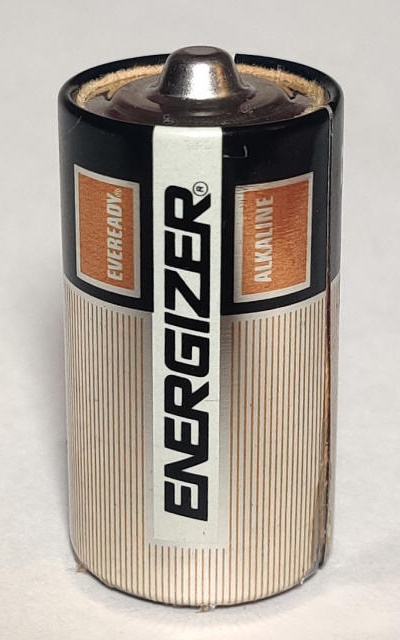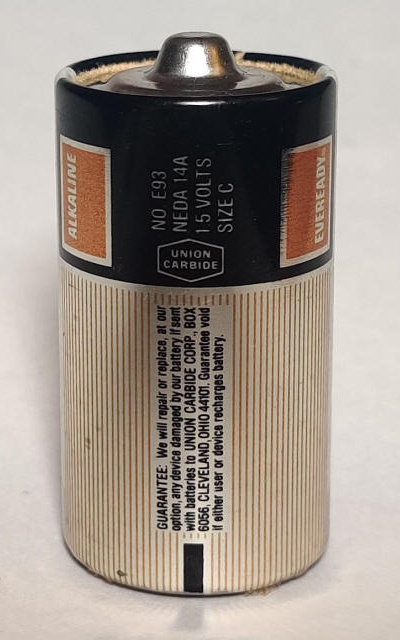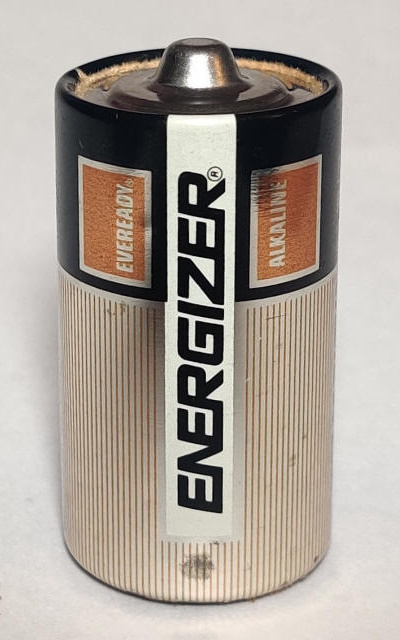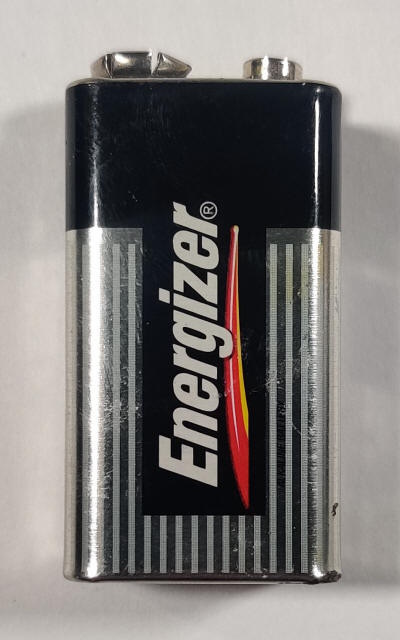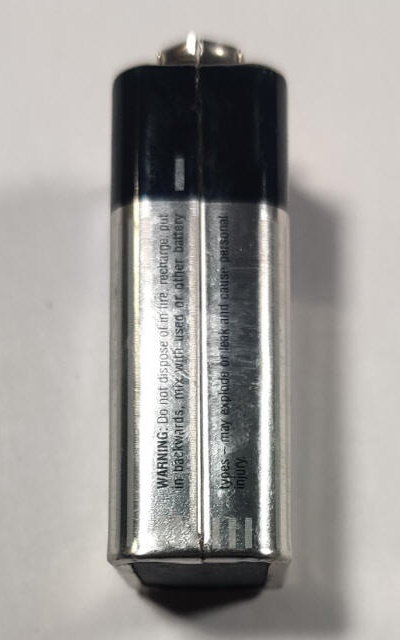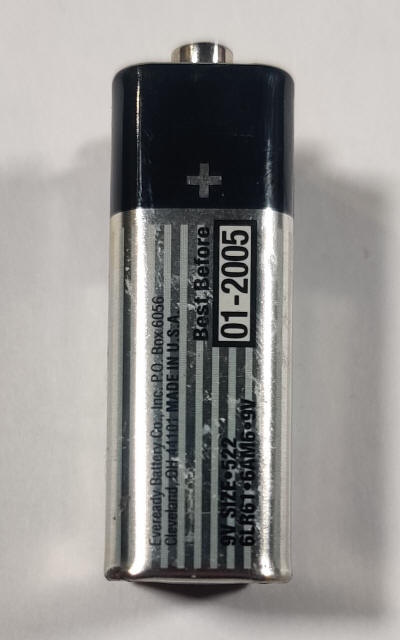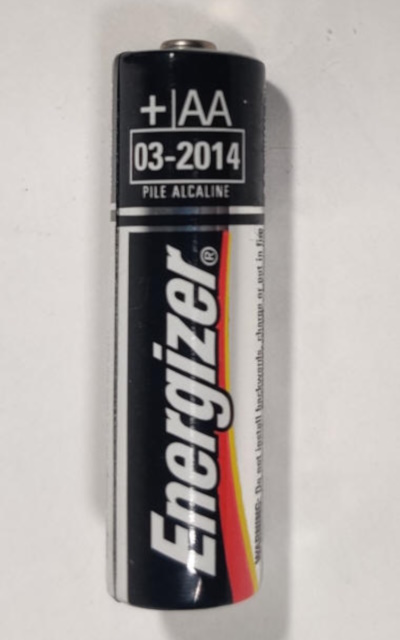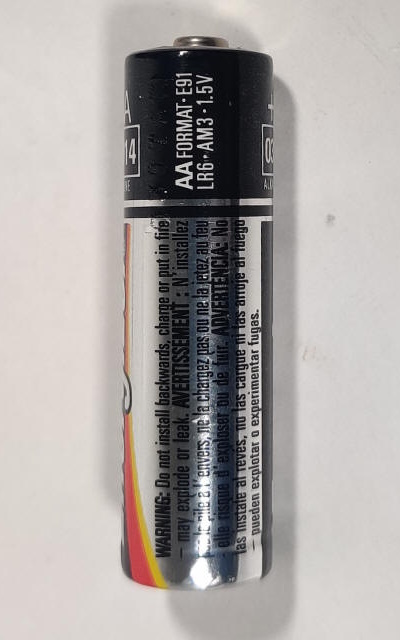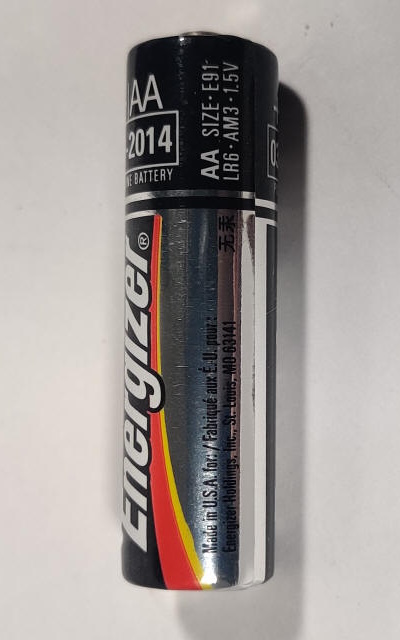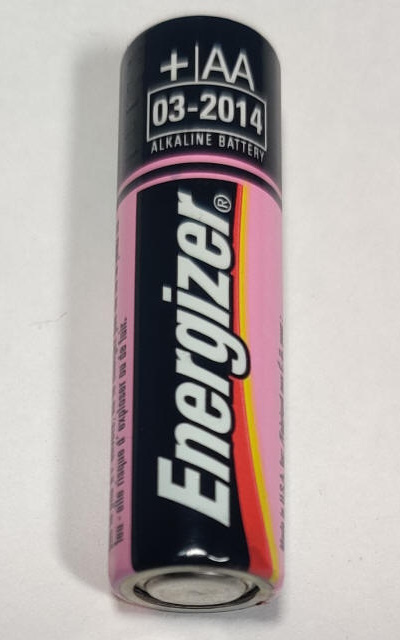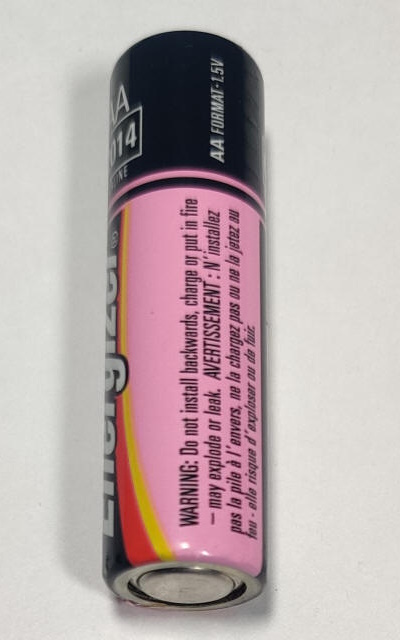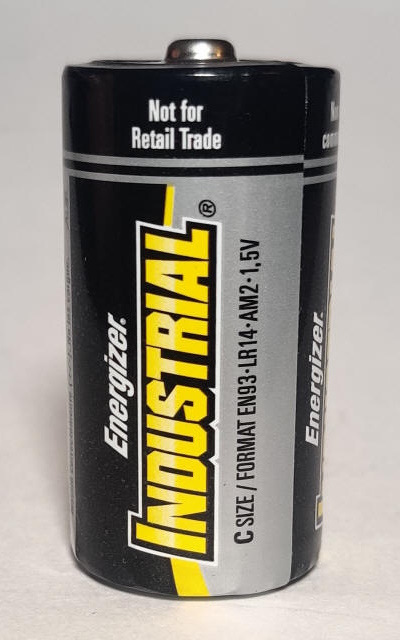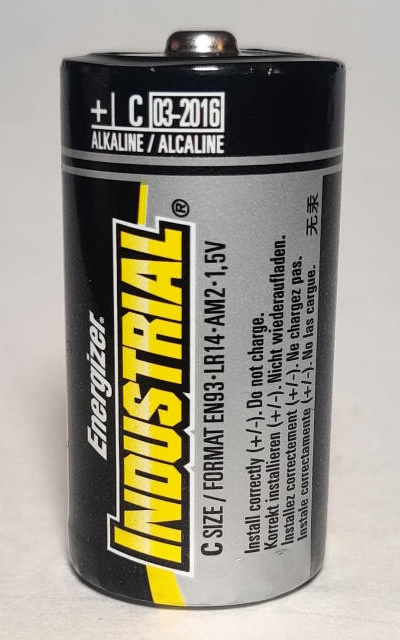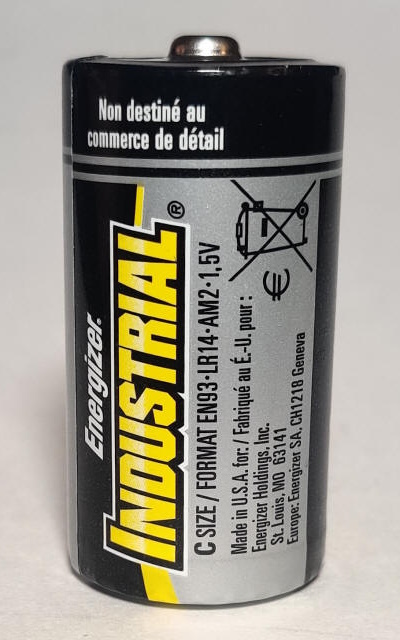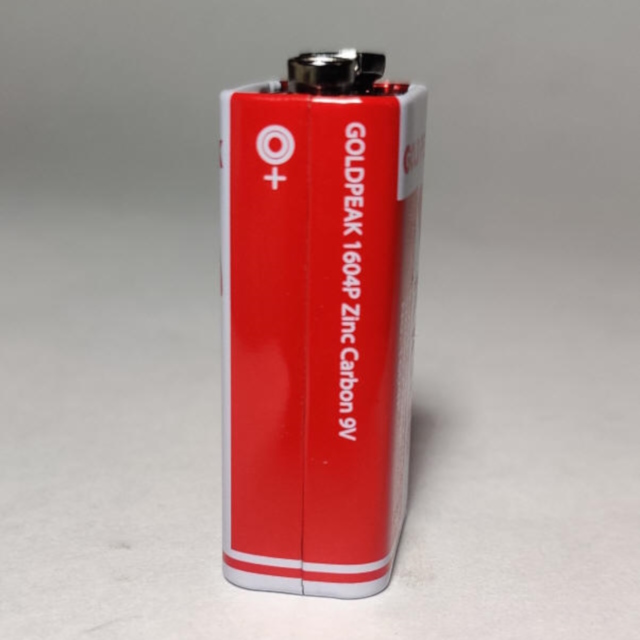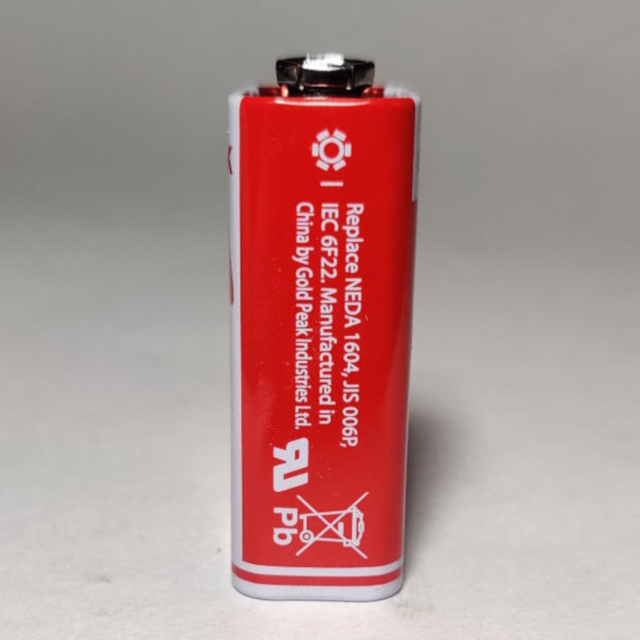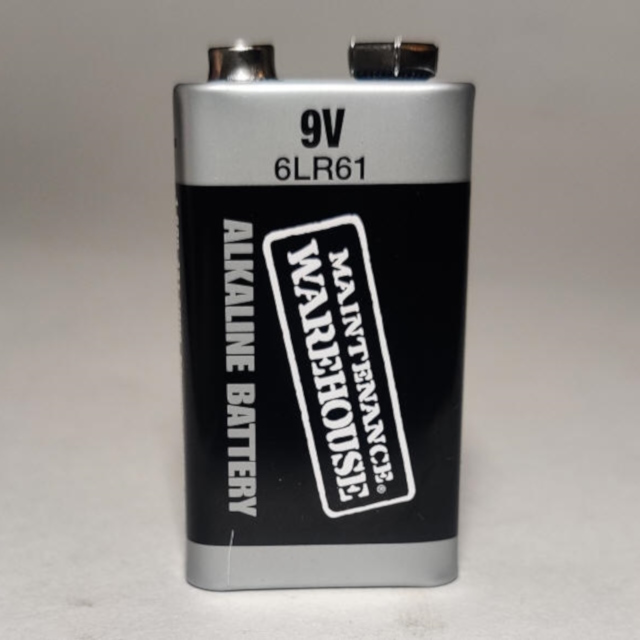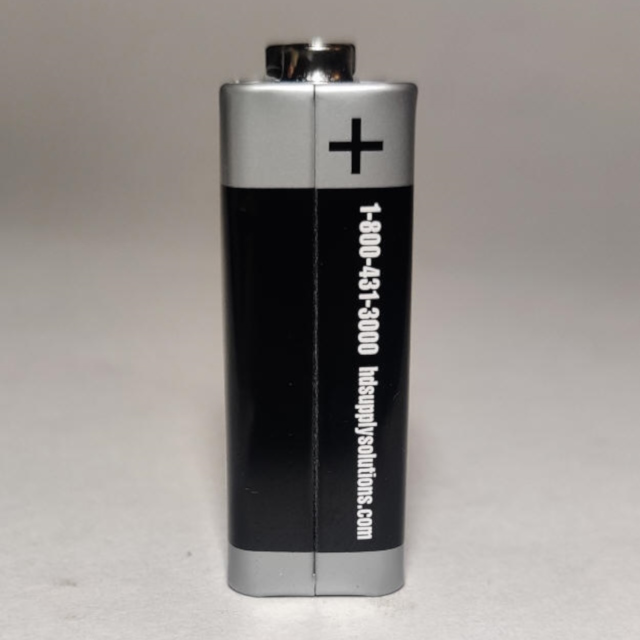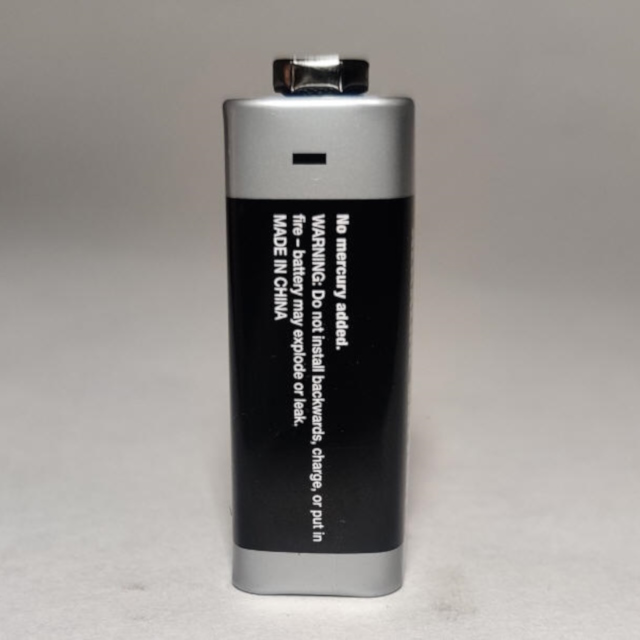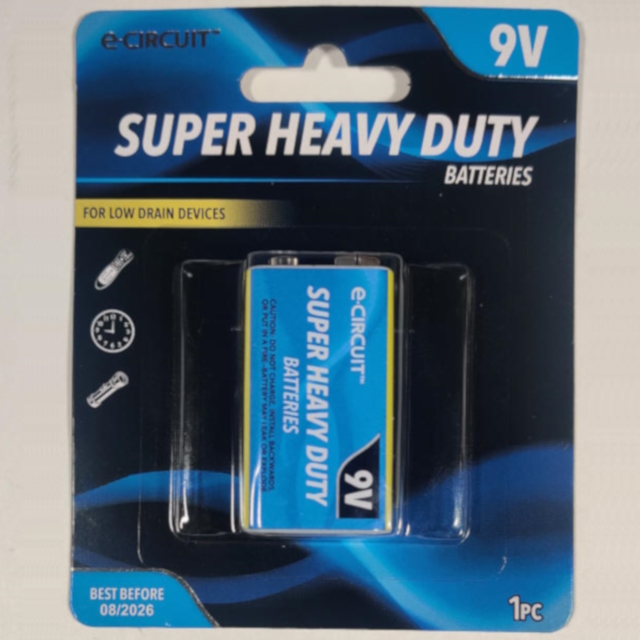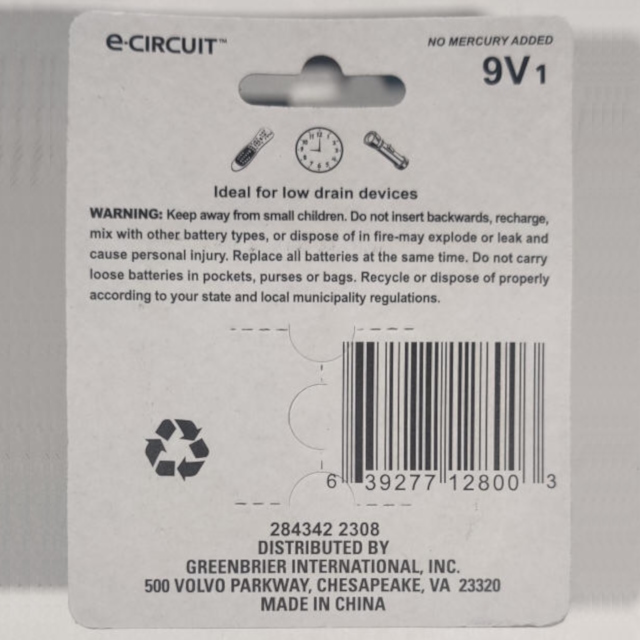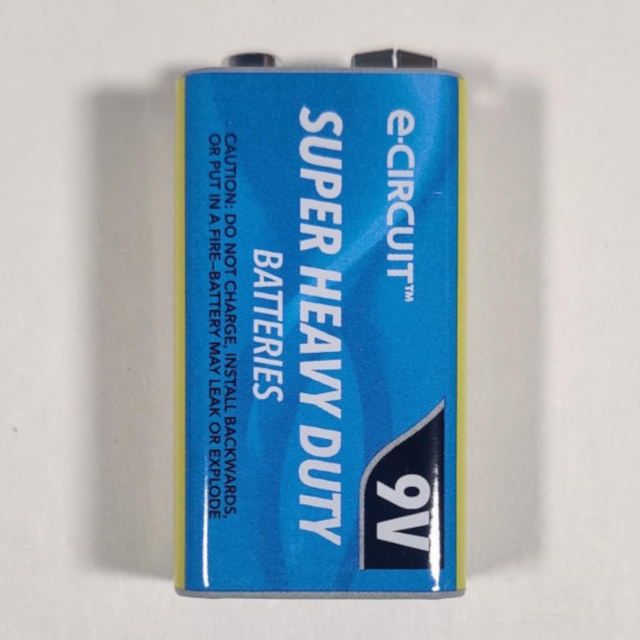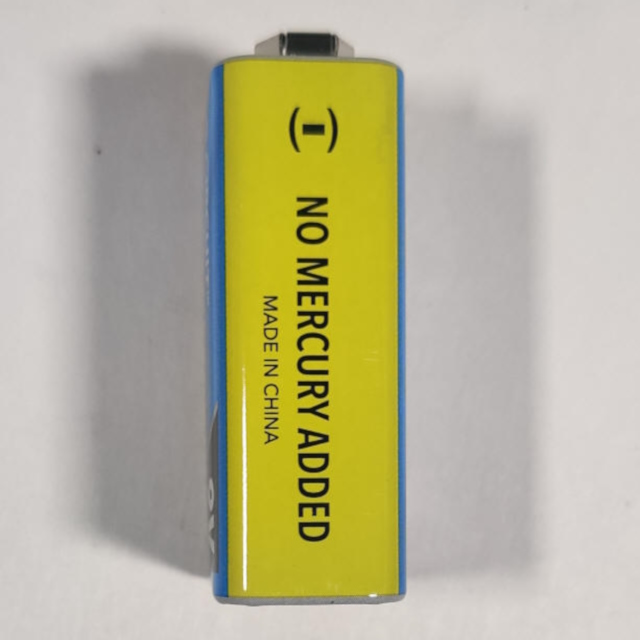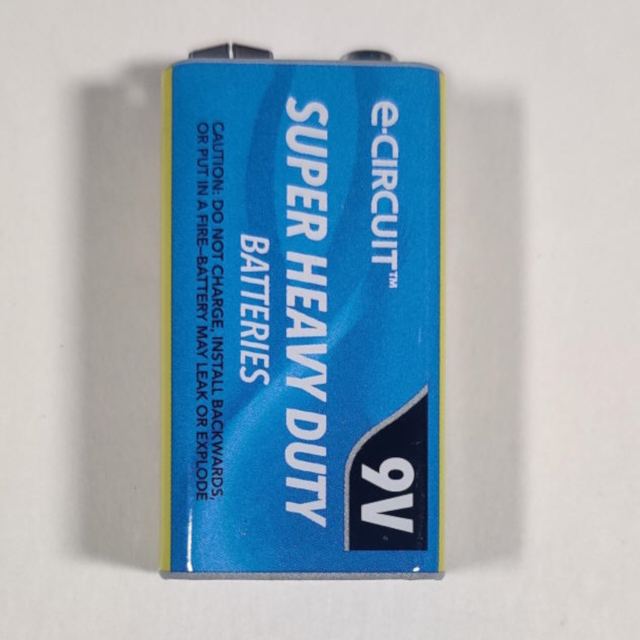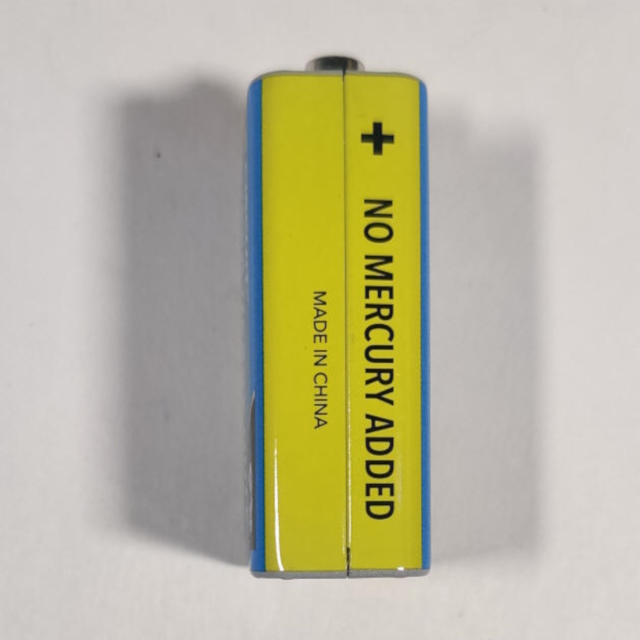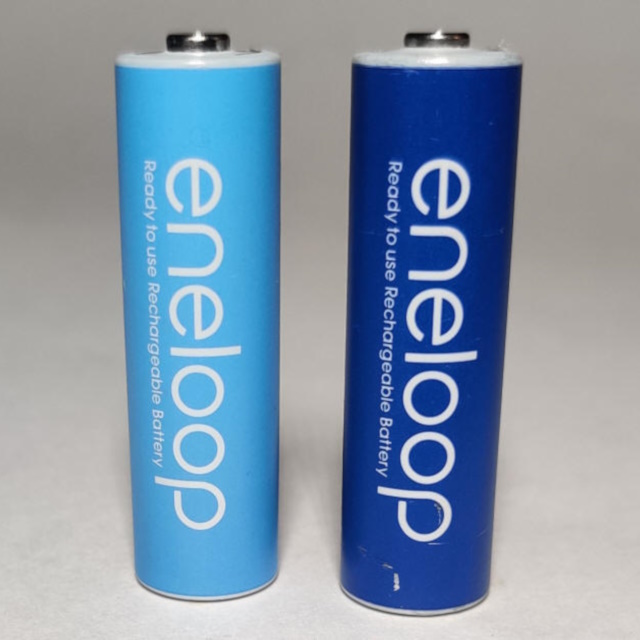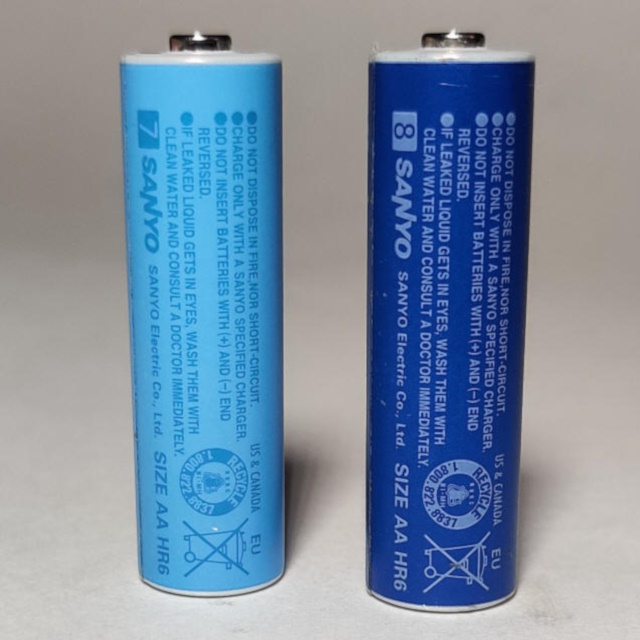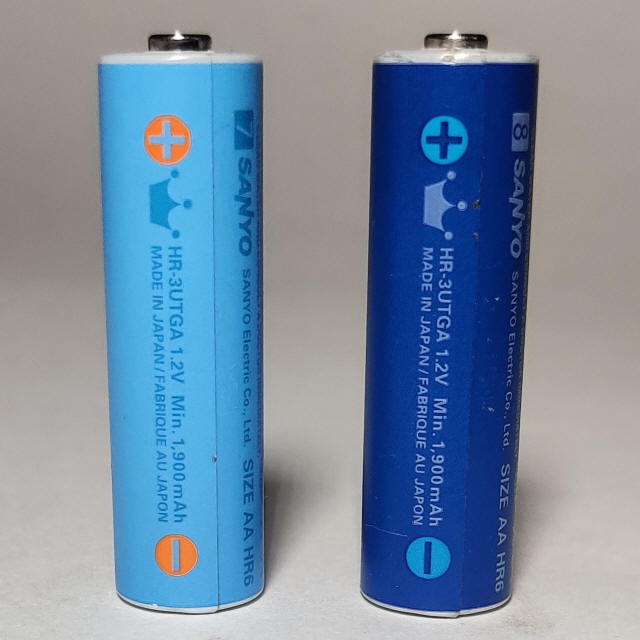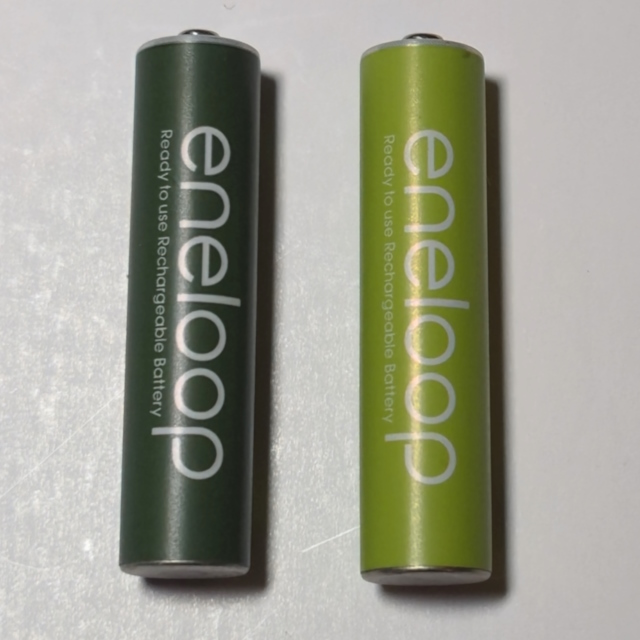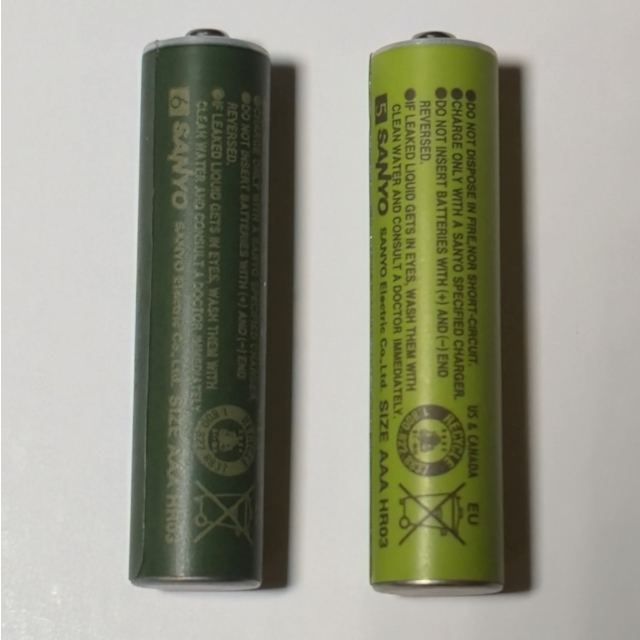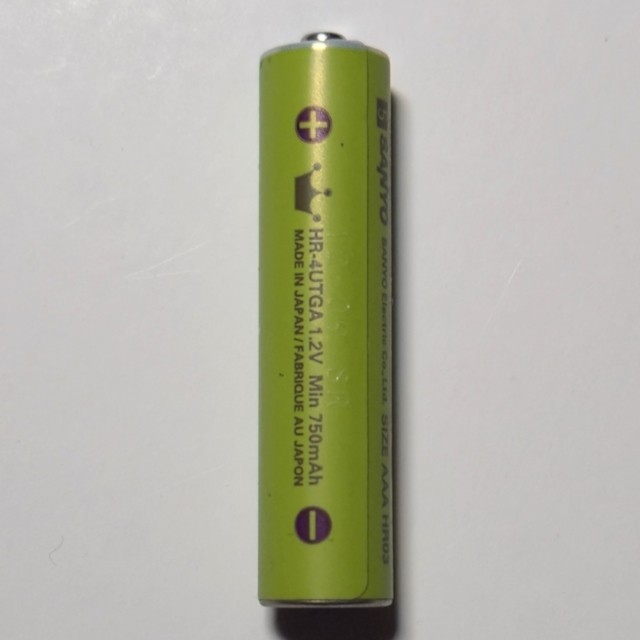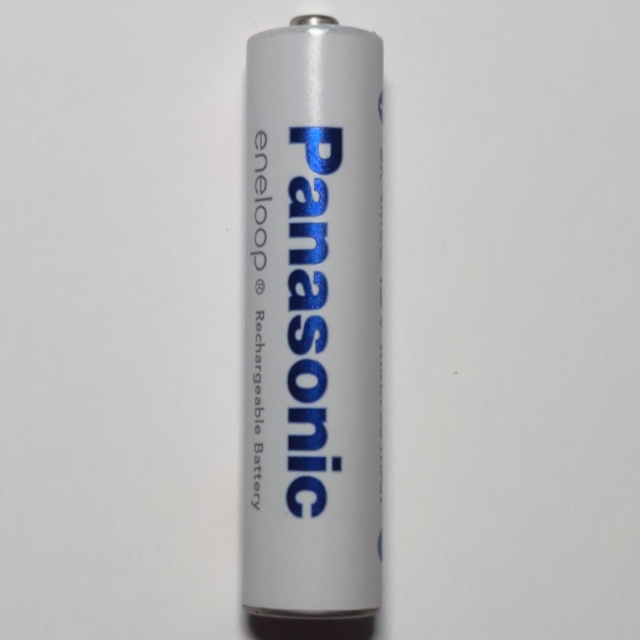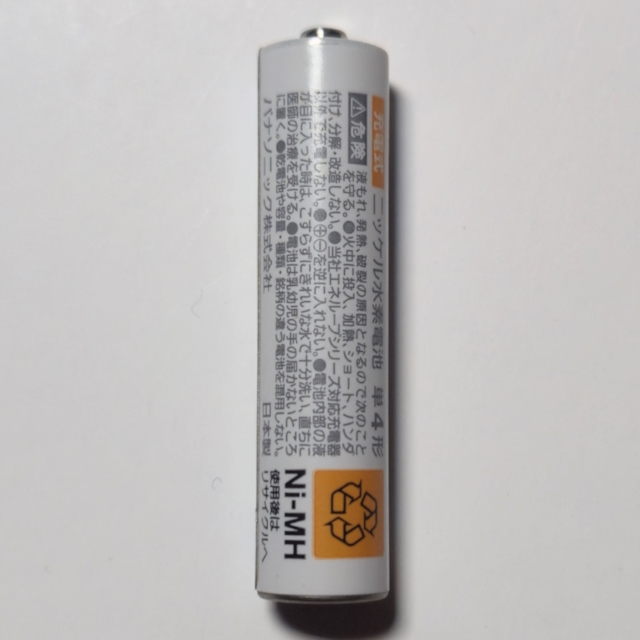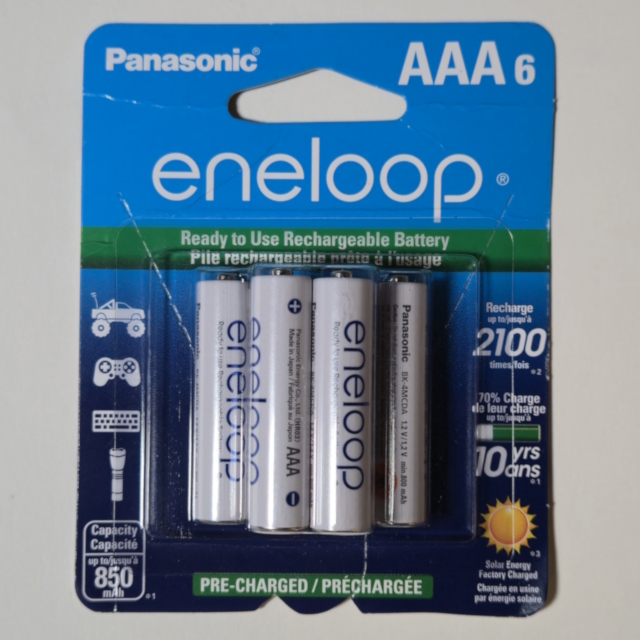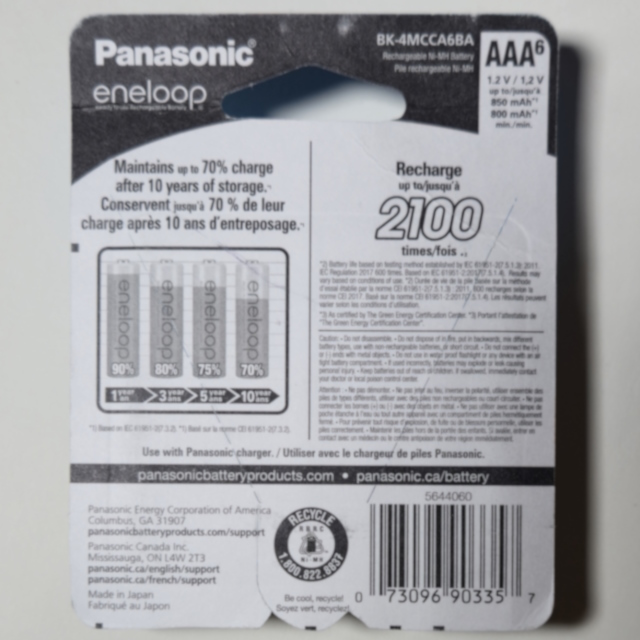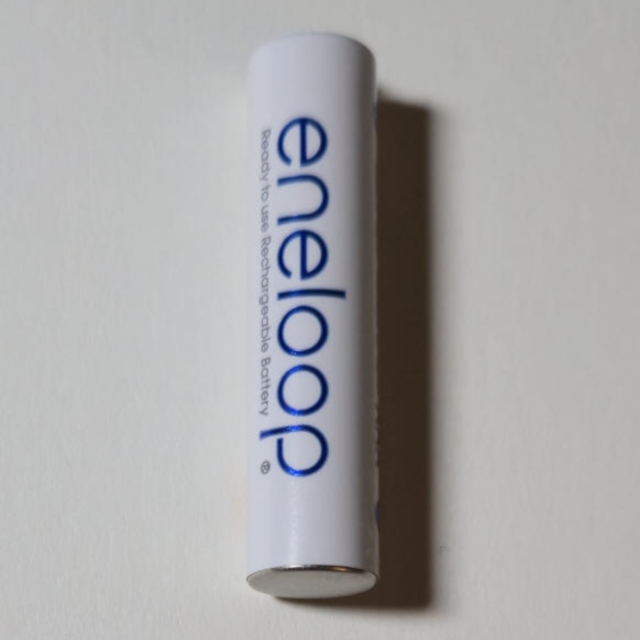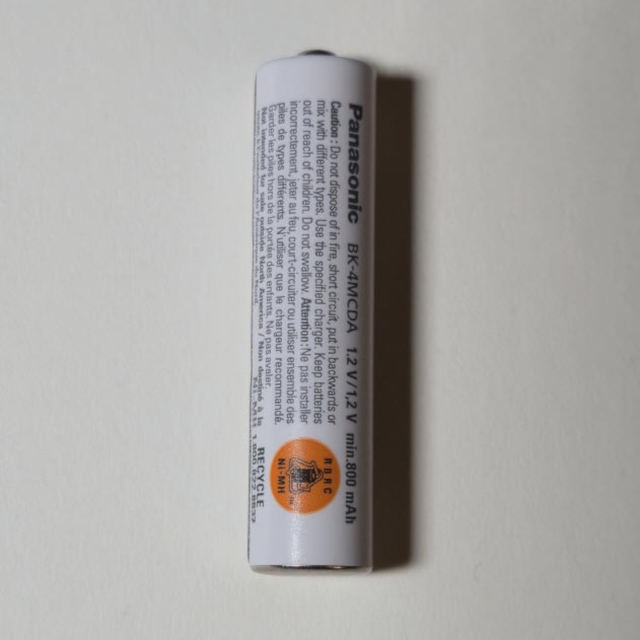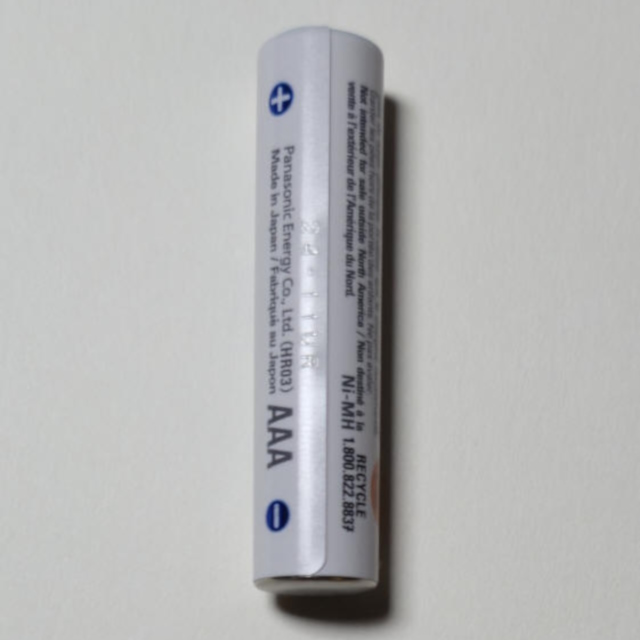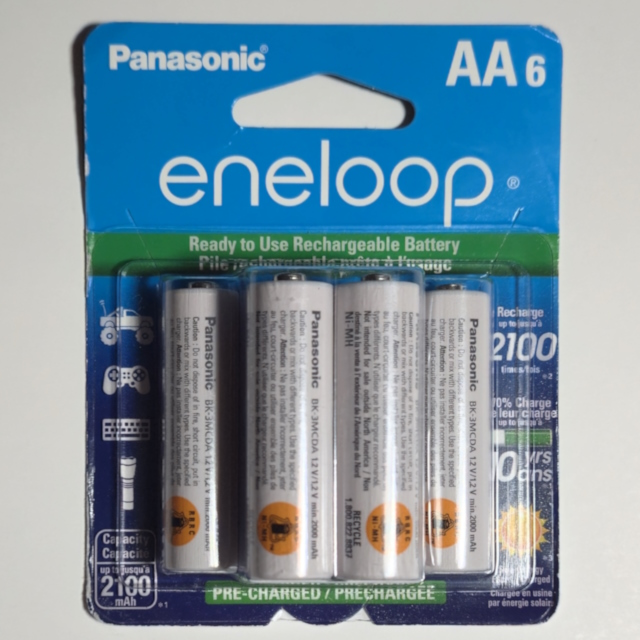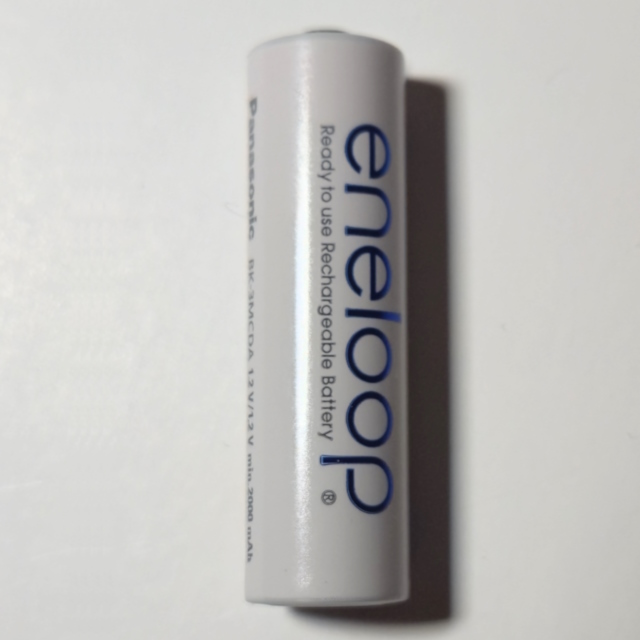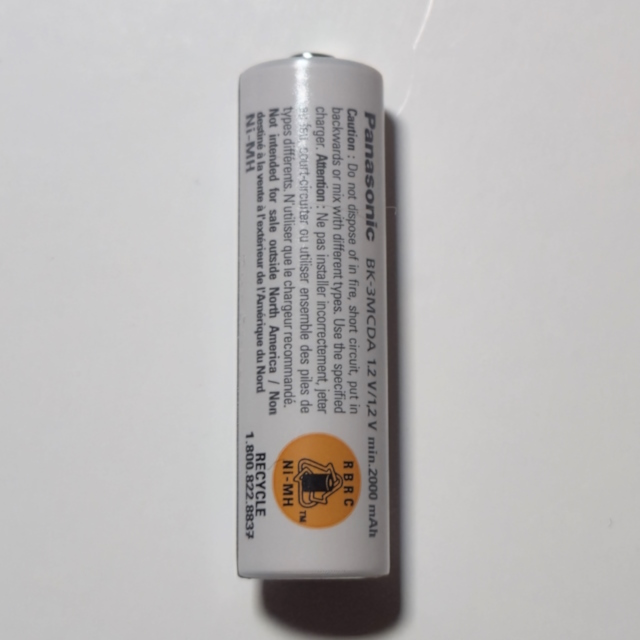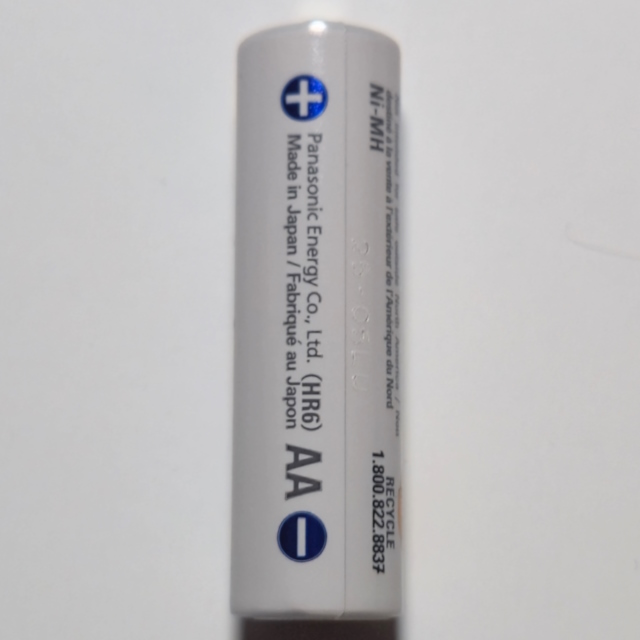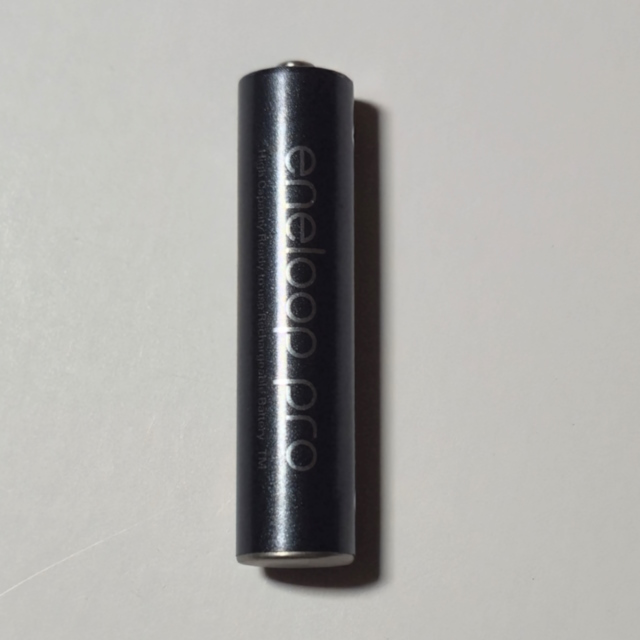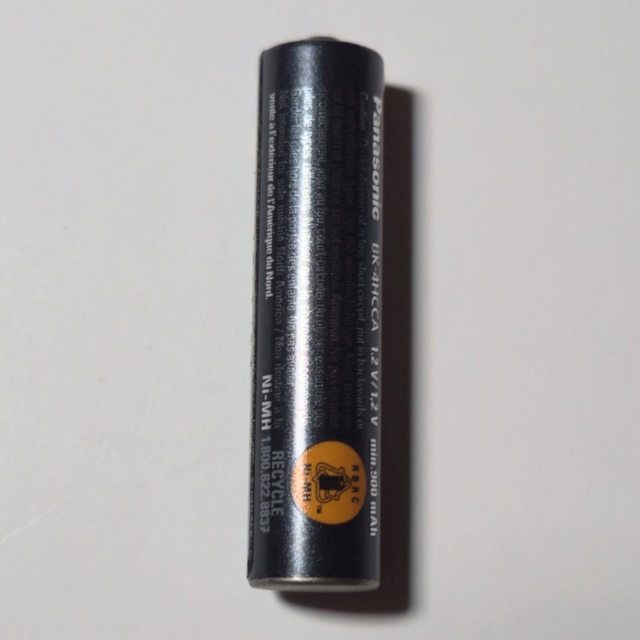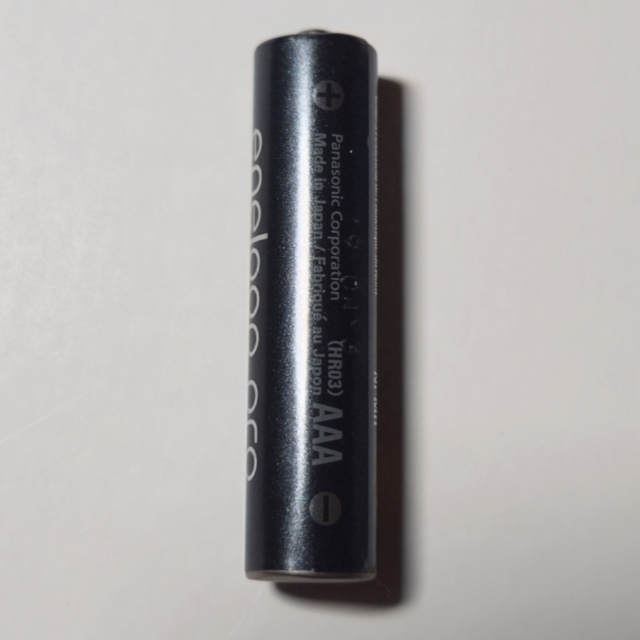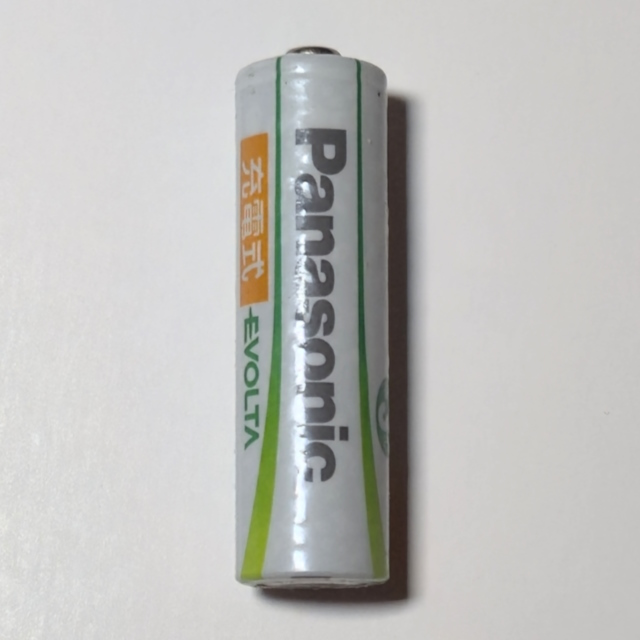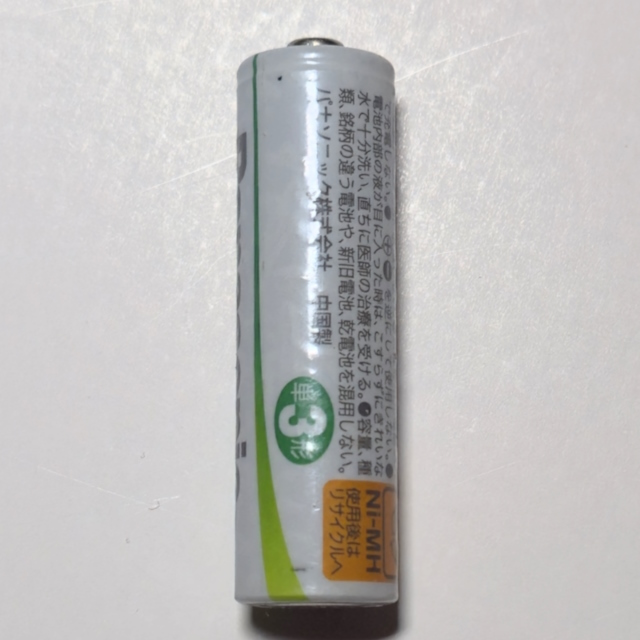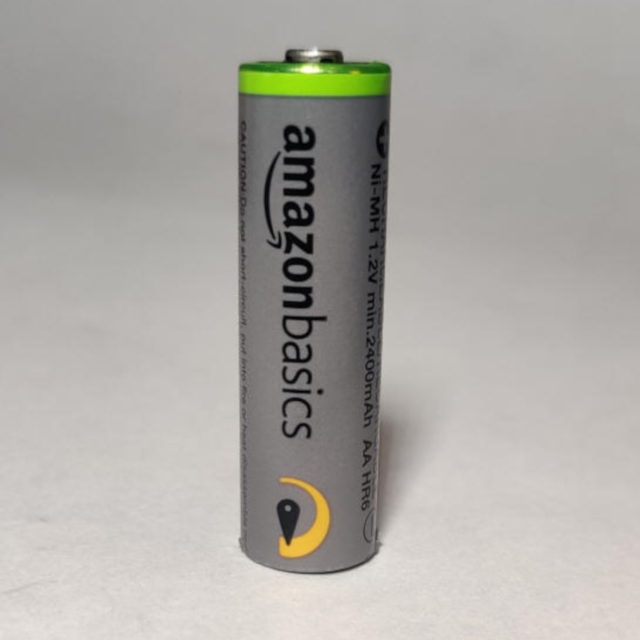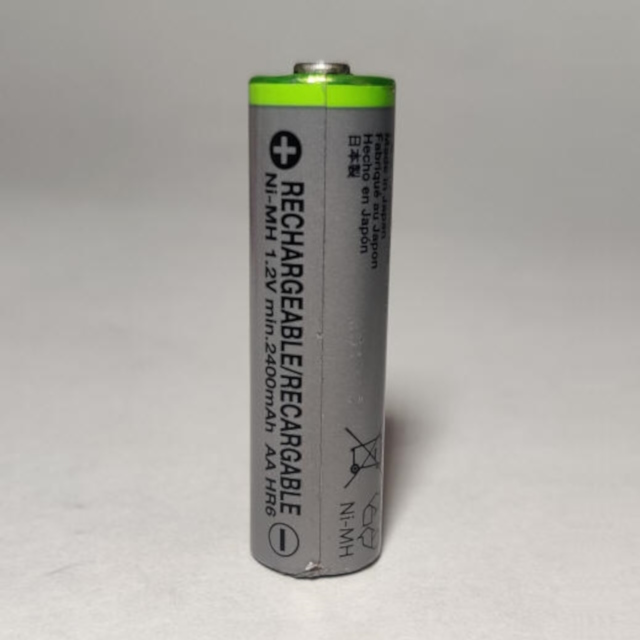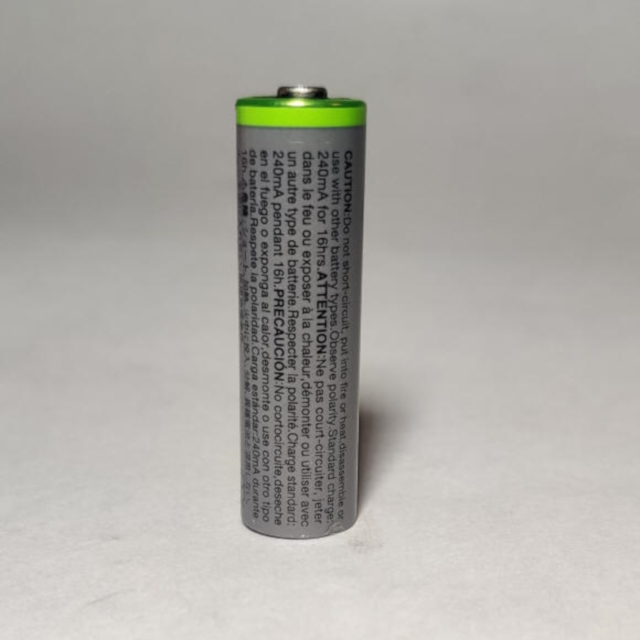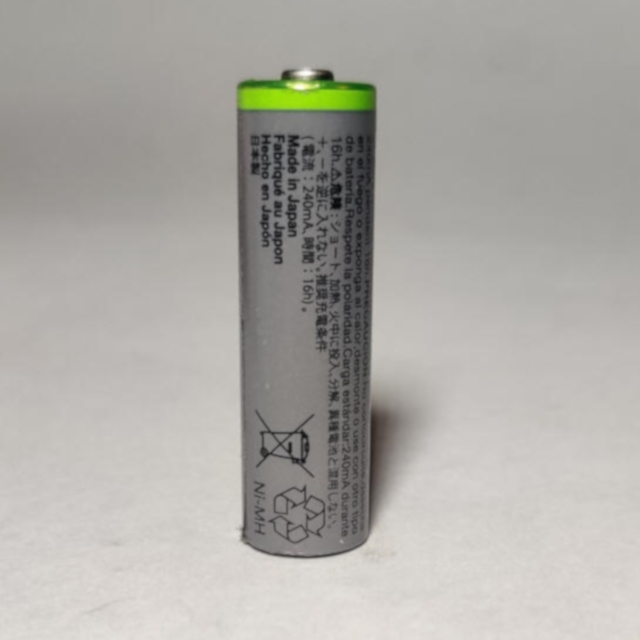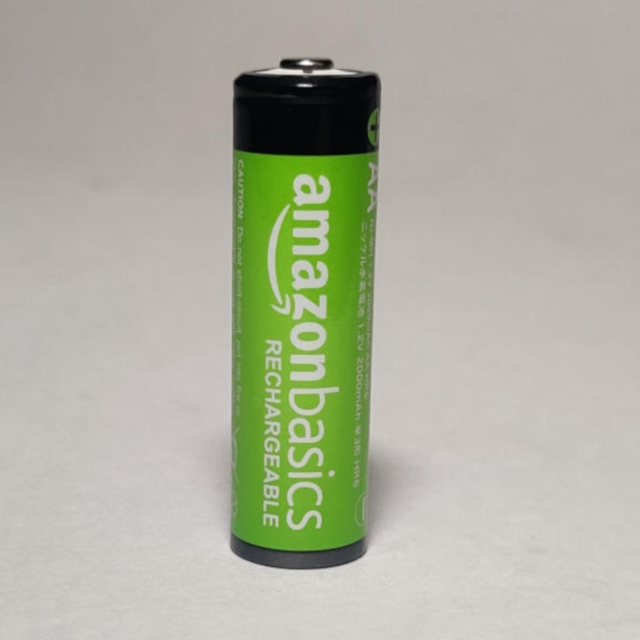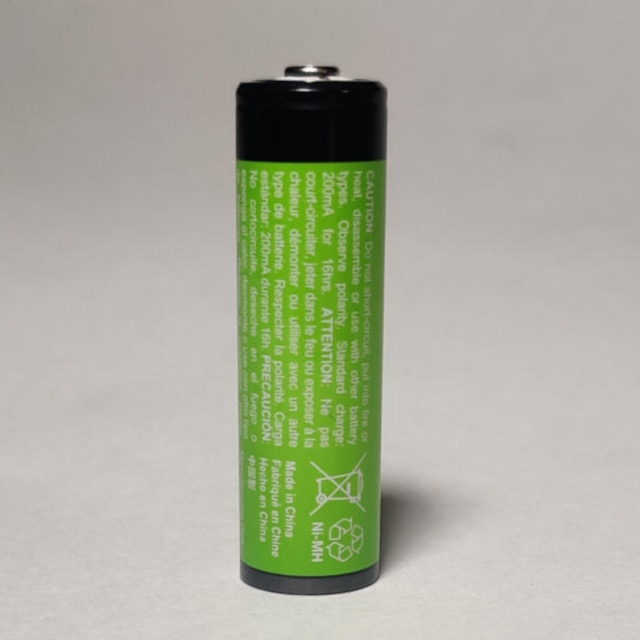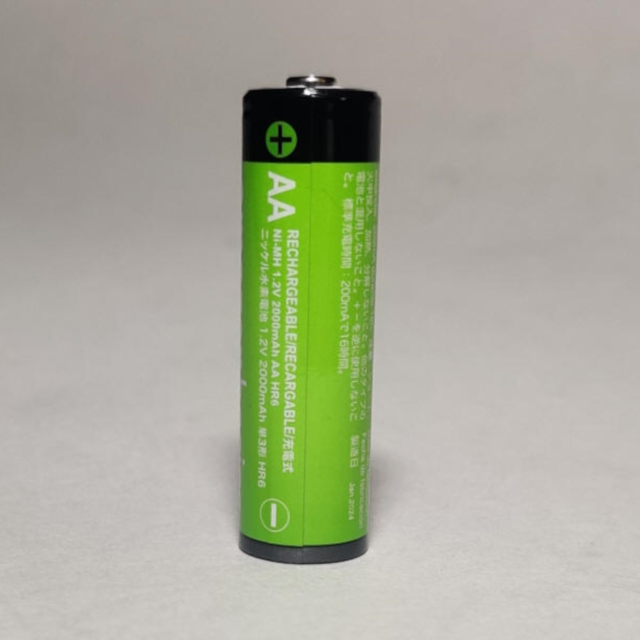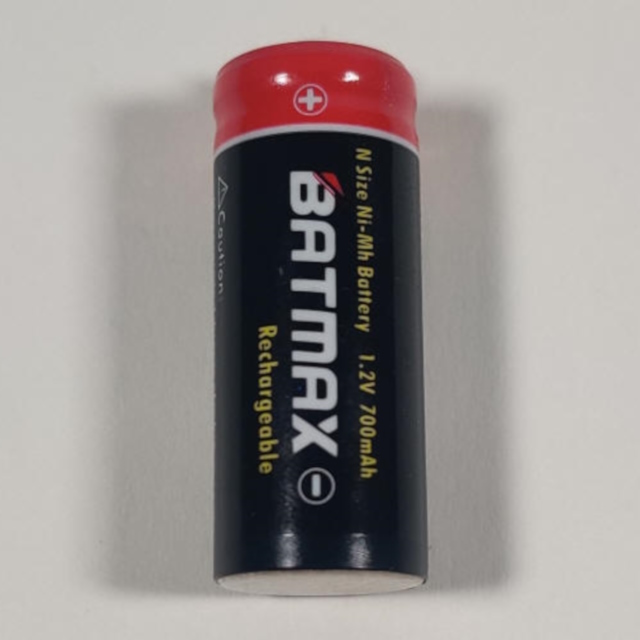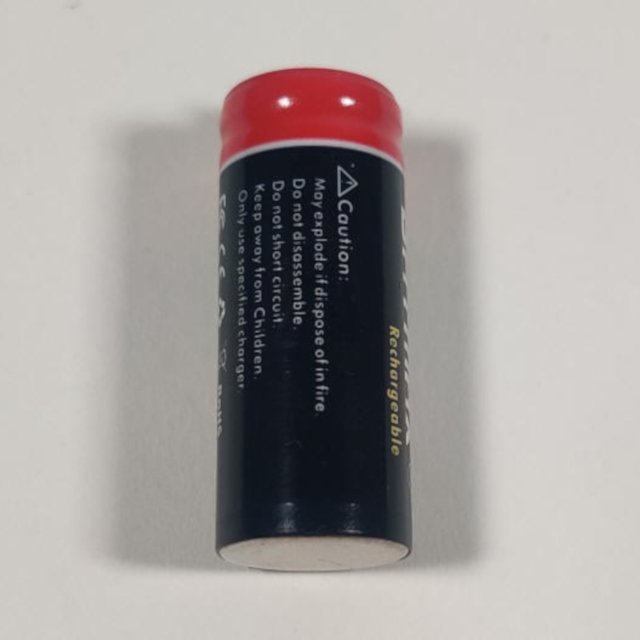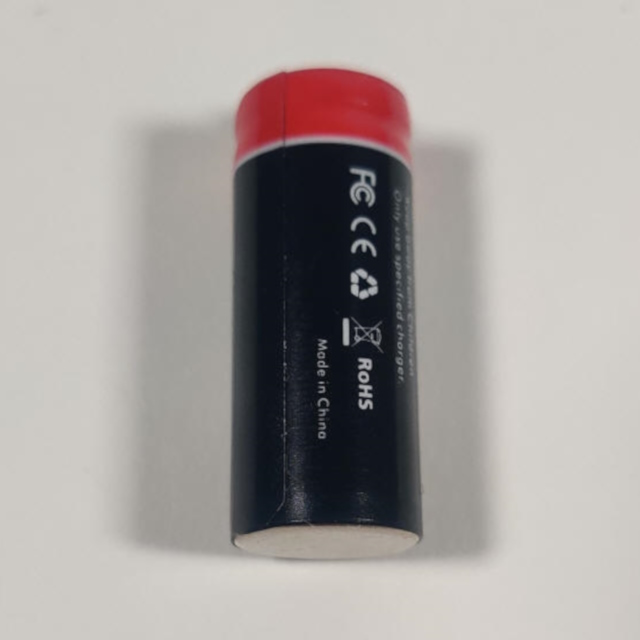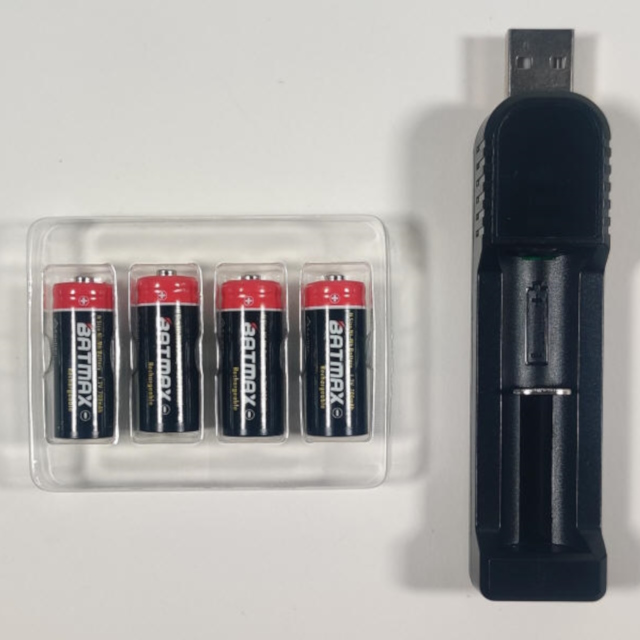fall inside a hole
 |
My battery collection
Although I did not initially set out to collect old batteries, I gradually found more in old toys and electronics that had interesting designs or were simply old and/or from other markets, and it seemed a bit of a shame to throw some of them away, so I have kept some of the more interesting and nicer-surviving batteries I have come across. I am also, as always, interested in the differences in the external design and construction over time.
National/Panasonic
Panasonic (known as National in Japan, both consumer brands of Matsushita) had a very distinctive red and later also black series of "Hi-Top" batteries throughout the 1970s and 1980s, carrying into the 1990s and 2000s.
| Front | Side/Rear | Side/Rear | Description | |
|---|---|---|---|---|
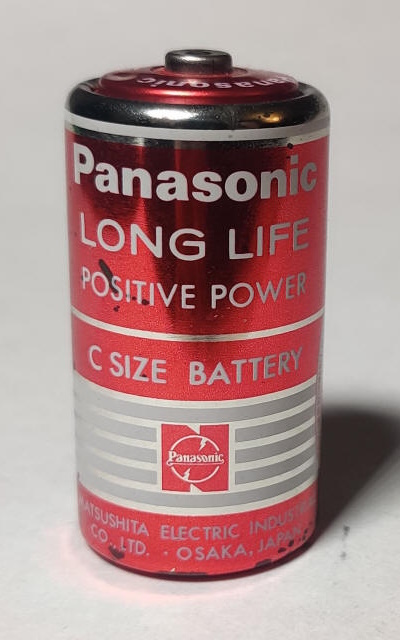 |
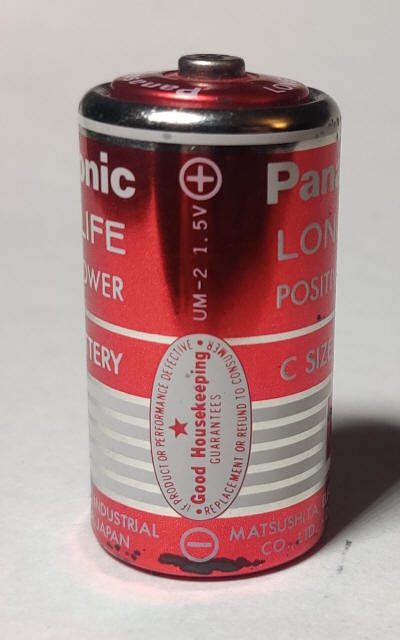 |
 |
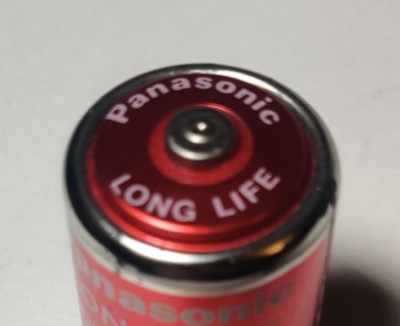 |
Shiny American Panasonic Long Life C battery with Good Housekeeping guarantee. No production mark on the bottom |
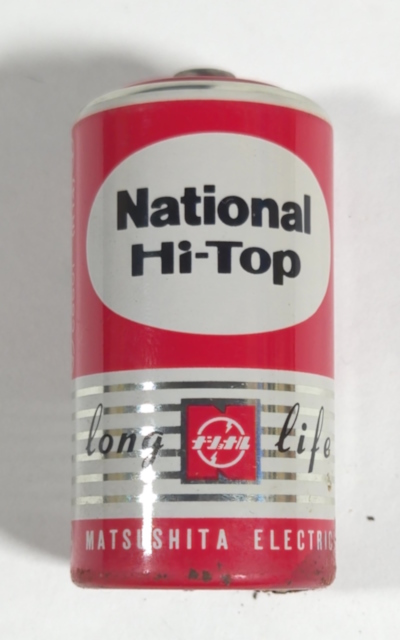 |
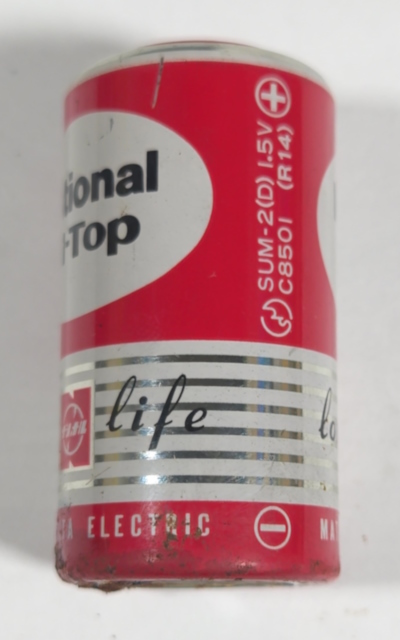 |
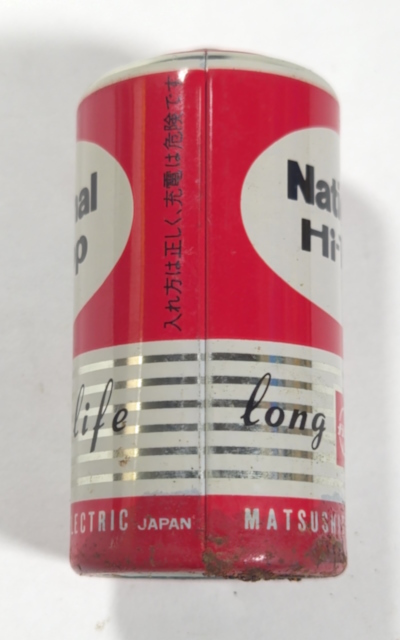 |
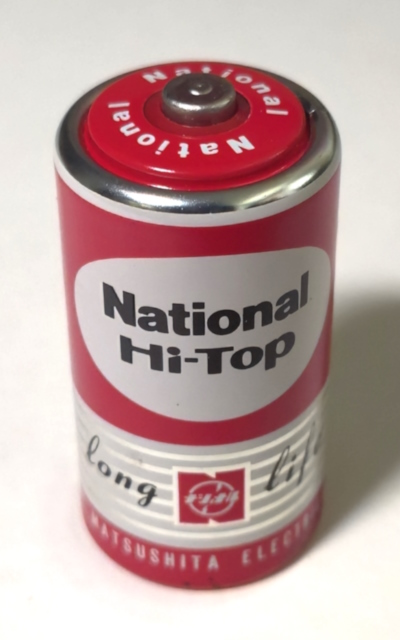 |
1976 production National Hi Top C battery with National logo around the top |
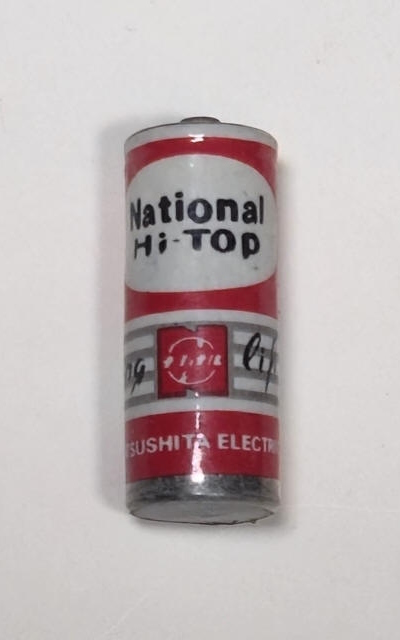 |
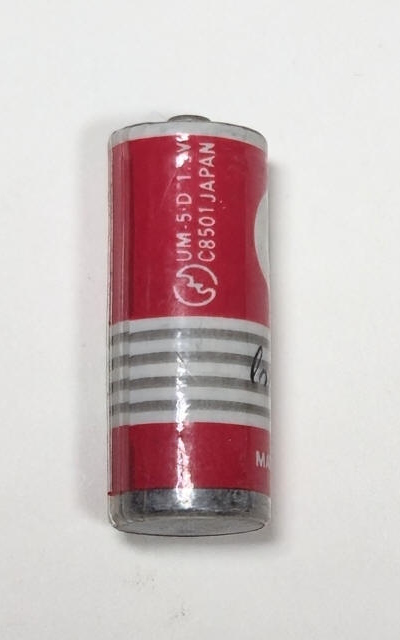 |
 |
Circa 1976 National Hi Top N size battery as included with early Bandai Mini Mini Rail sets | |
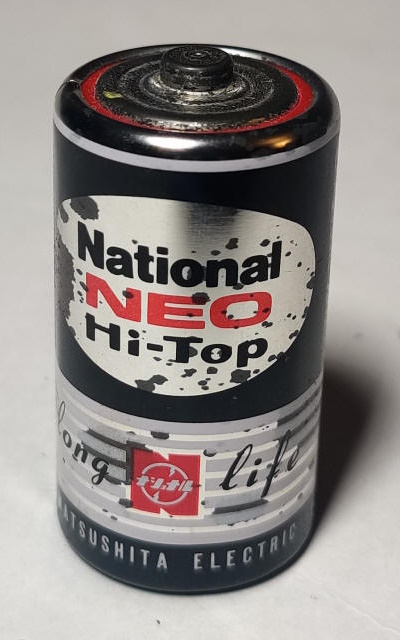 |
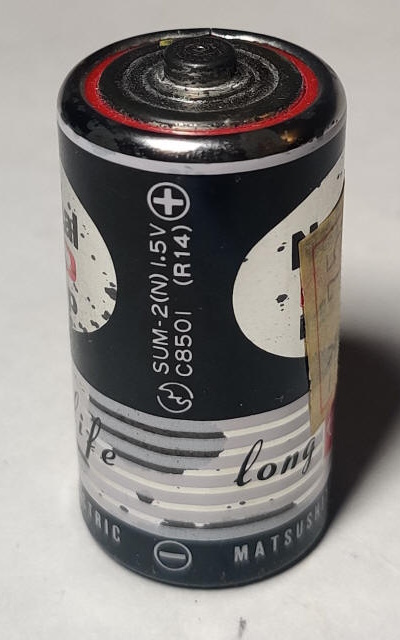 |
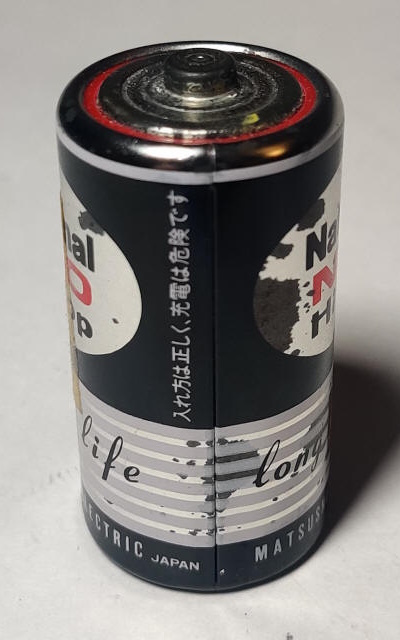 |
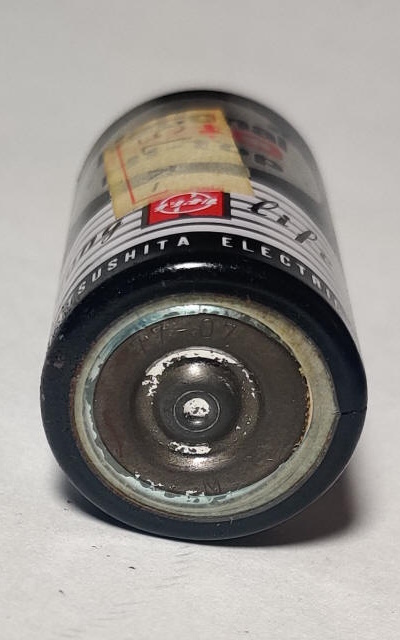 |
1977 production Long Life National NEO Hi Top that originally sold for 75 yen |
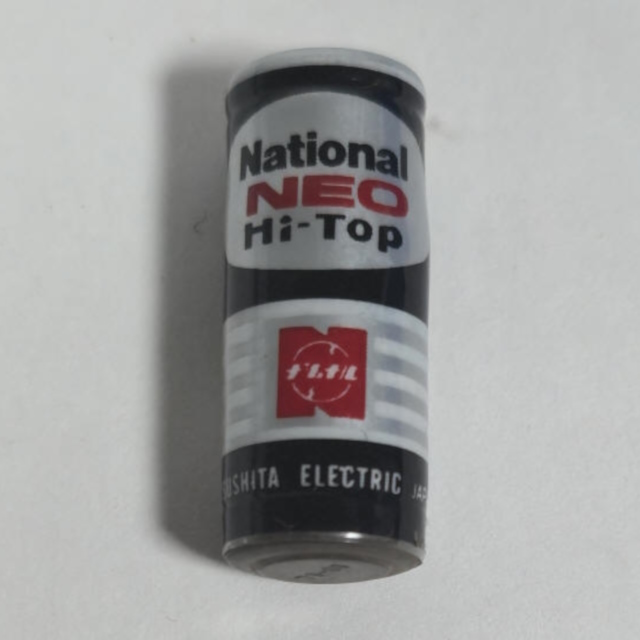 |
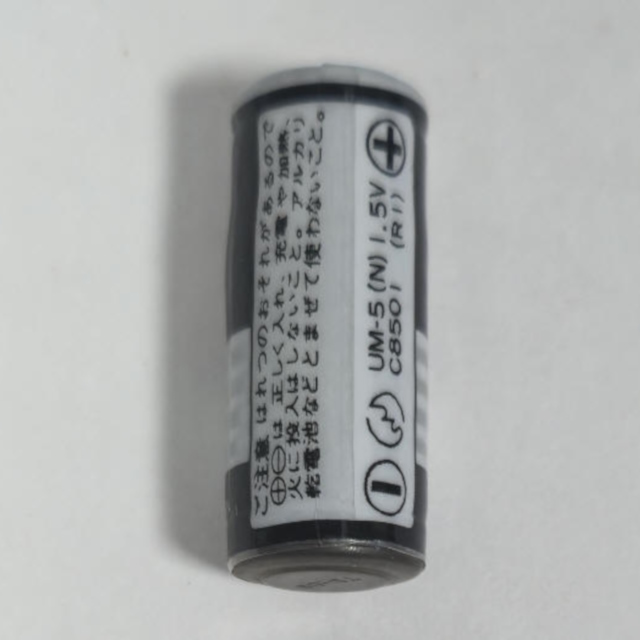 |
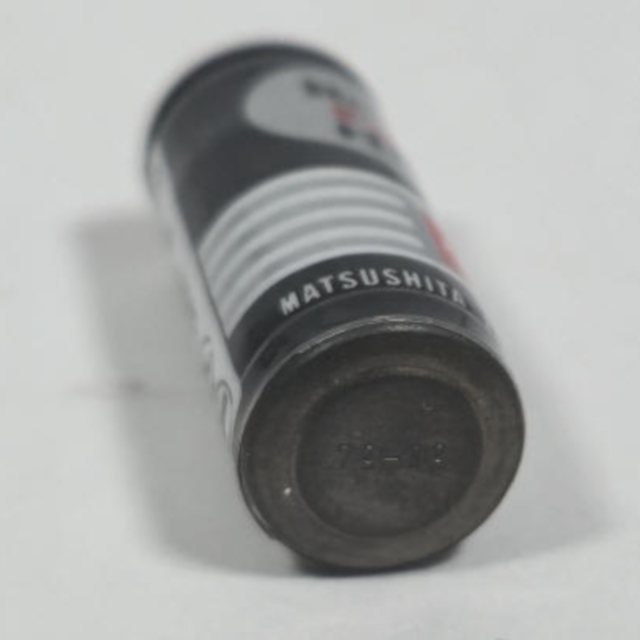 |
Small N-size 1979 Neo Hi-Top | |
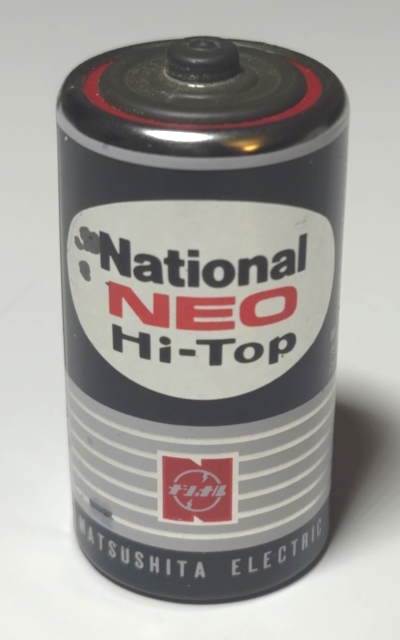 |
 |
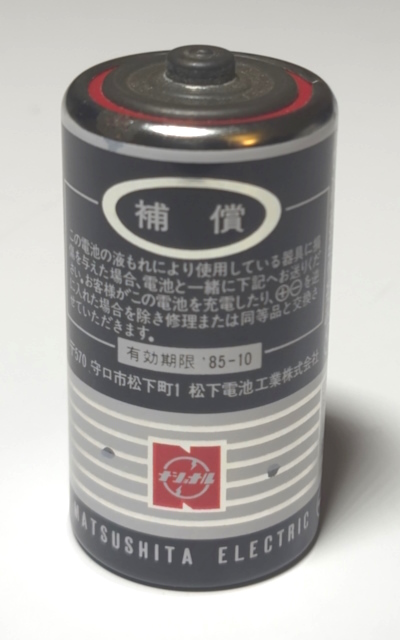 |
 |
1982 C Neo Hi Top good until 1985. The rear panel talks about National replacing a product damaged by normal use of their batteries if you send them the item and batteries that caused the damage |
 |
 |
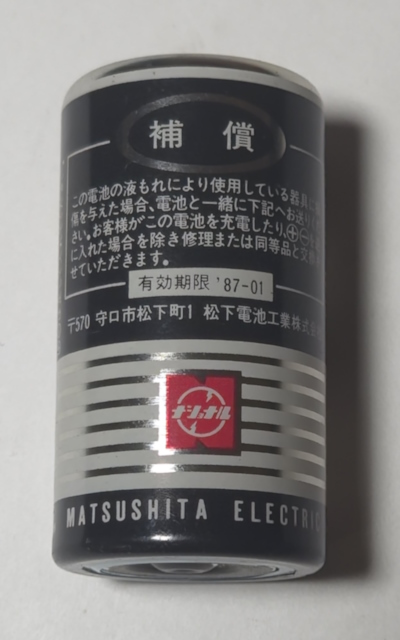 |
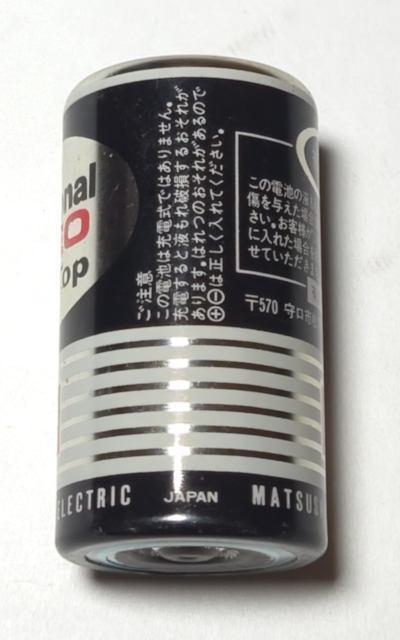 |
Late 1983 production C Neo Hi Top that is marked as expiring in January 1987 - good for about 3 years |
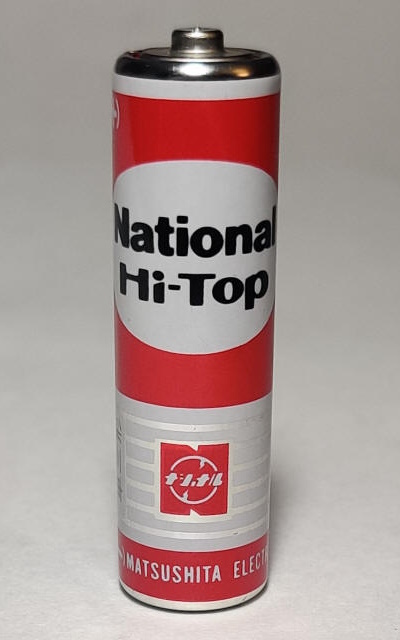 |
 |
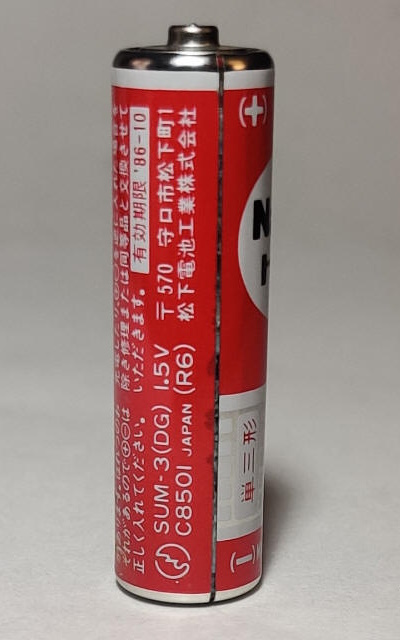 |
1984 production Japanese market National Hi-Top AA | |
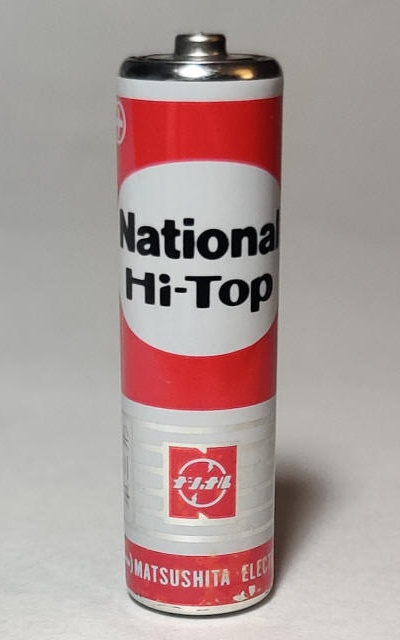 |
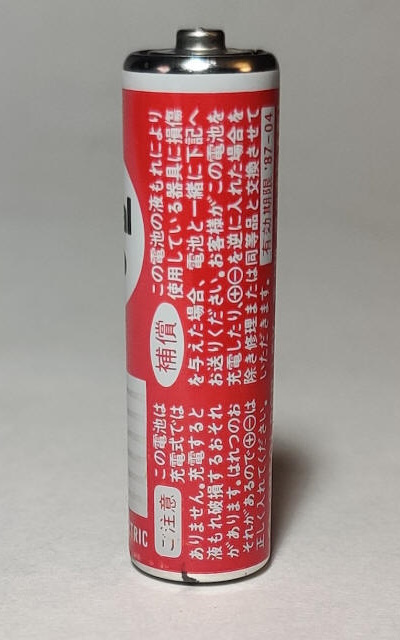 |
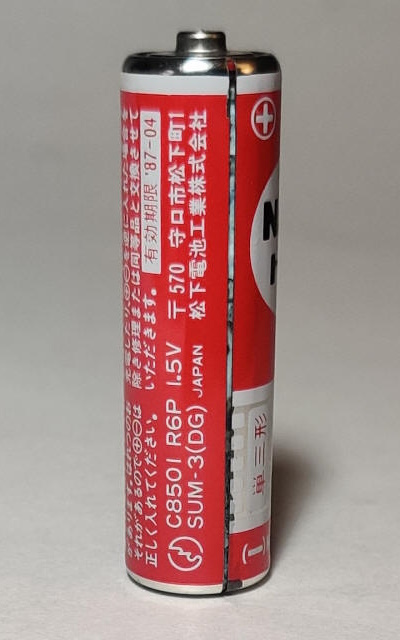 |
1985 production National Hi-Top AA (note that the positive mark is now fully circled) | |
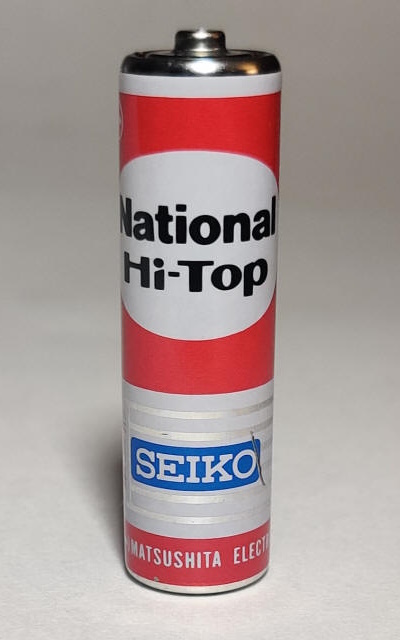 |
 |
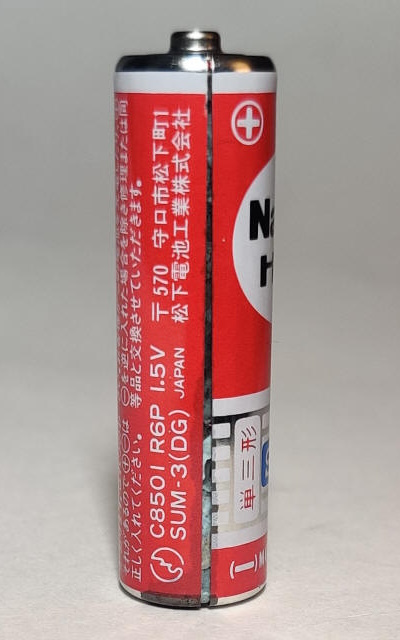 |
1988 production Seiko-marked AA Hi-Top | |
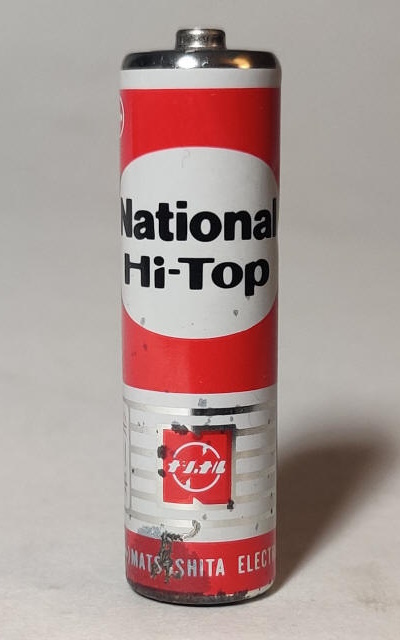 |
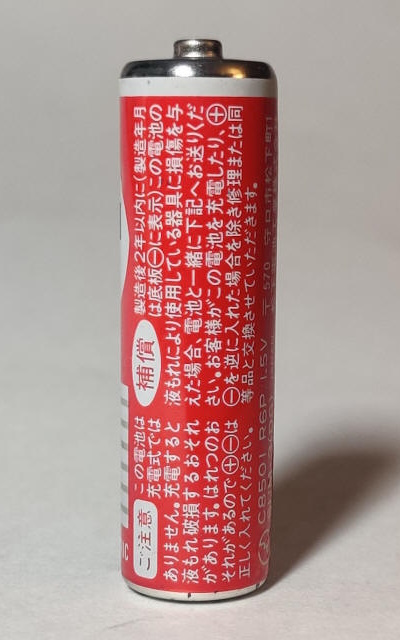 |
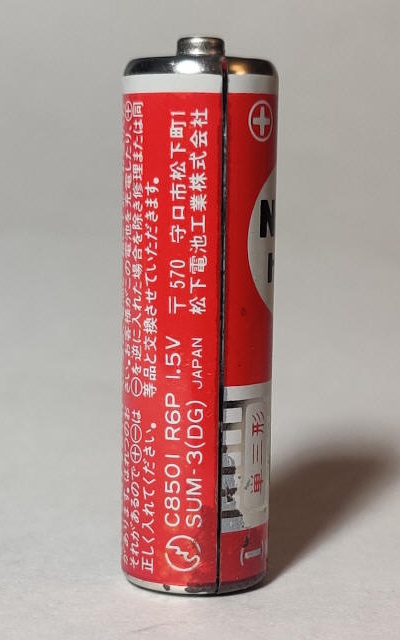 |
Regular 1988-1989 Japanese market AA Hi-Top | |
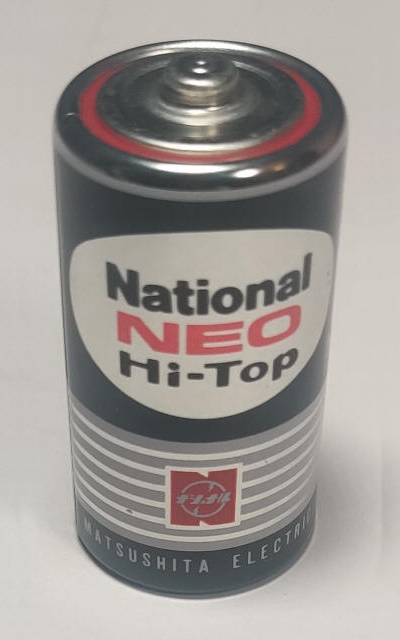 |
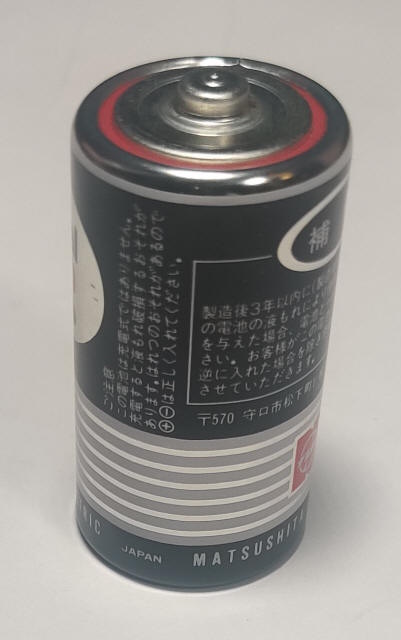 |
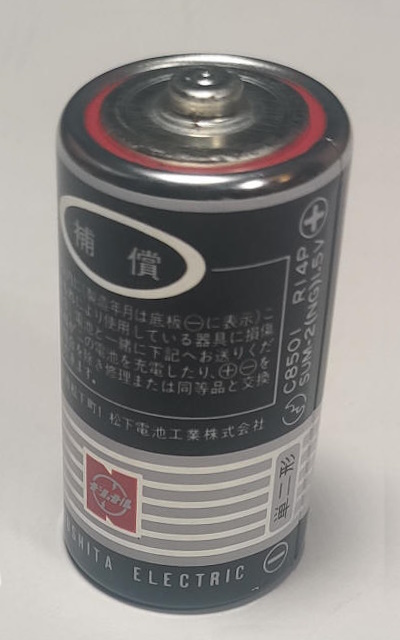 |
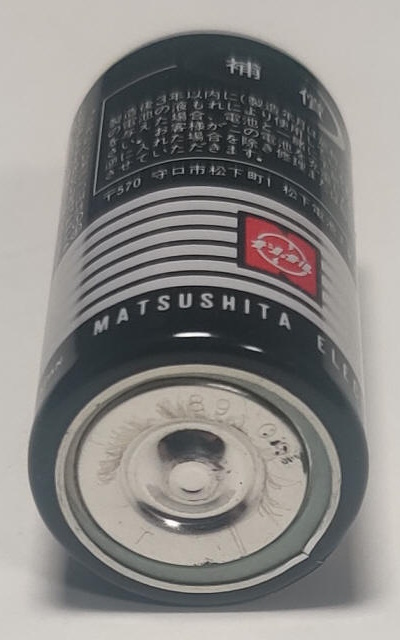 |
September 1989 production black Japanese market National NEO Hi-Top |
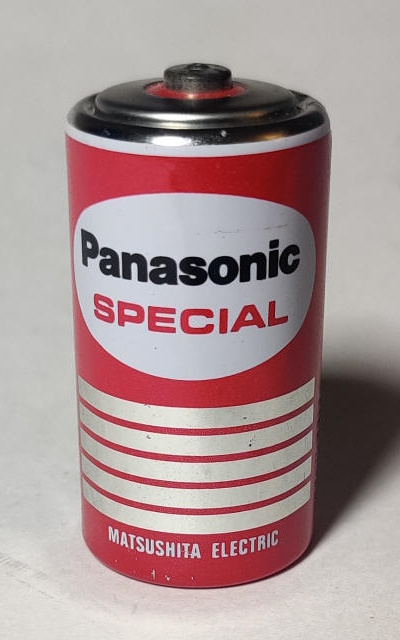 |
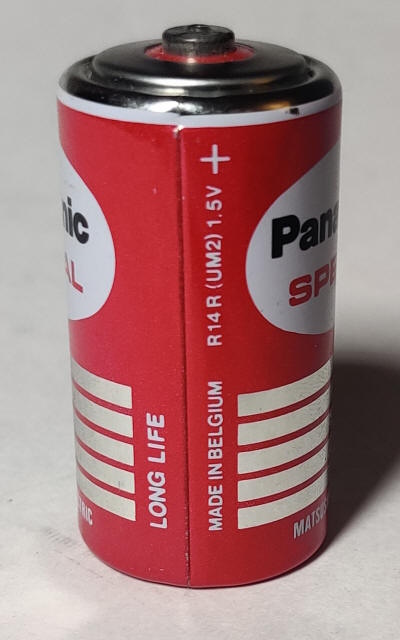 |
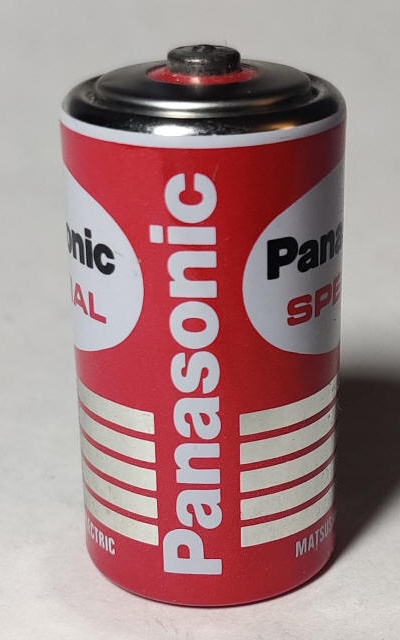 |
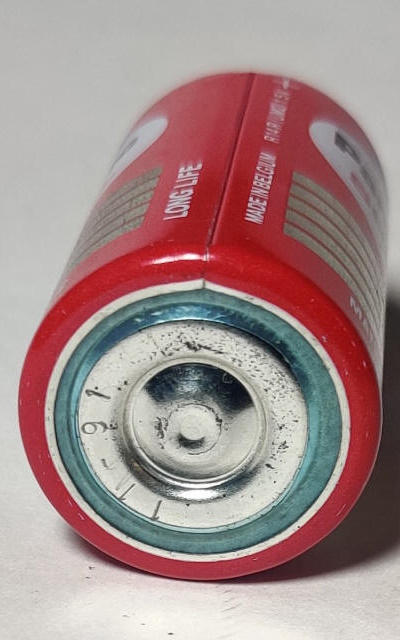 |
1991 American market Panasonic Special C made in Belgium |
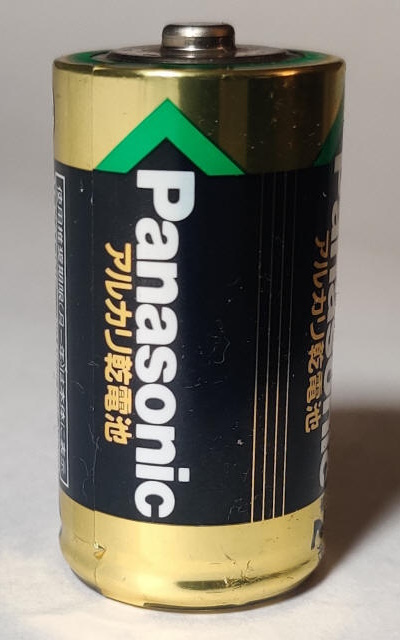 |
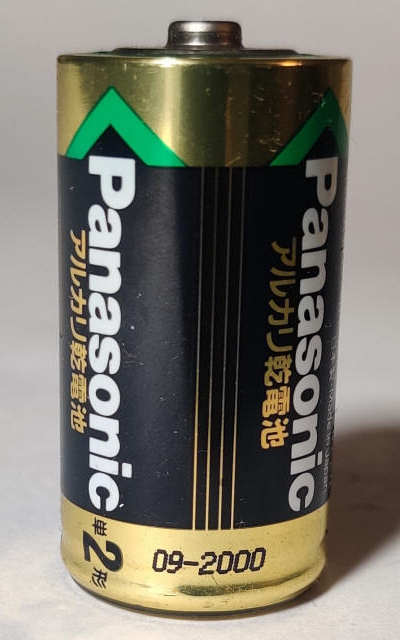 |
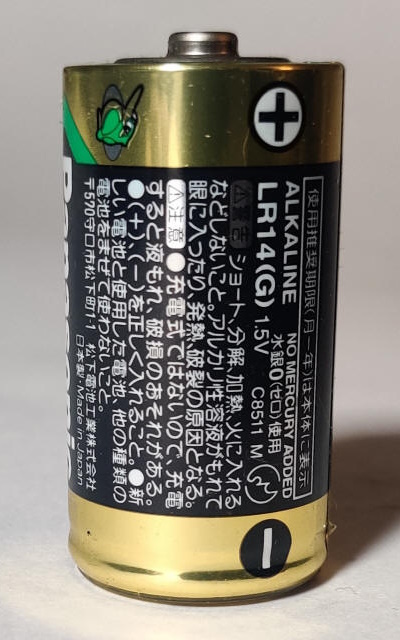 |
1990s Japanese market Panasonic Alkaline C battery | |
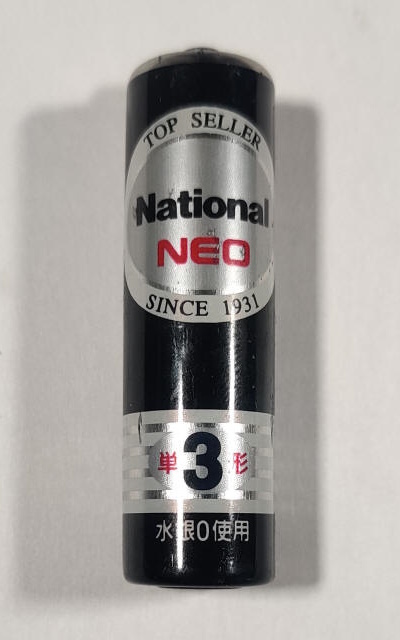 |
 |
 |
A black Neo Hi-Top AA dated 2003 | |
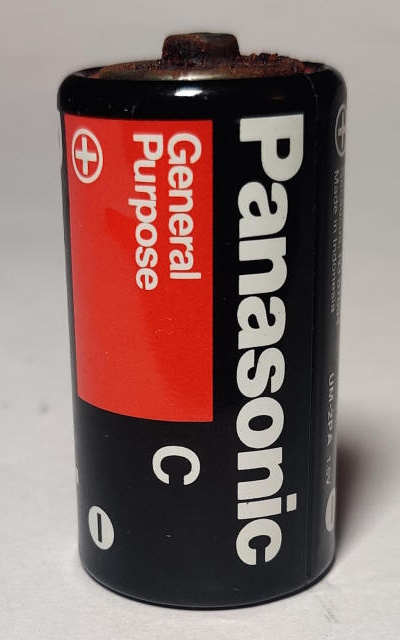 |
 |
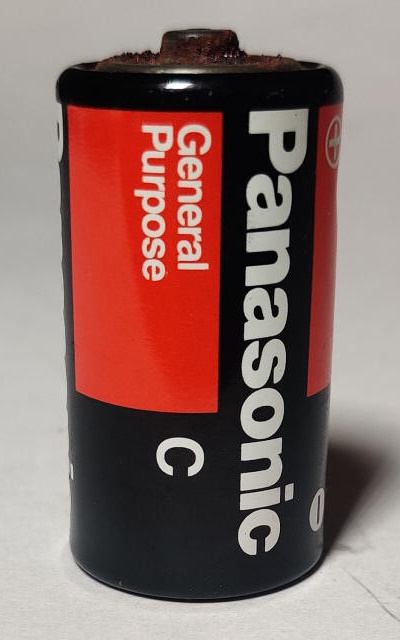 |
Cheaper American market Panasonic General Purpose zinc-carbon batteries probably from the later 1990s or 2000s | |
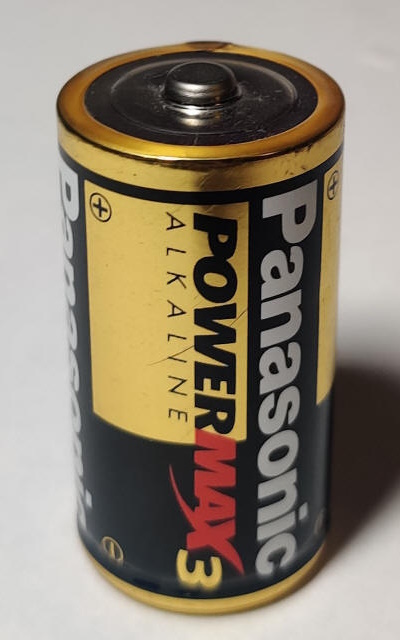 |
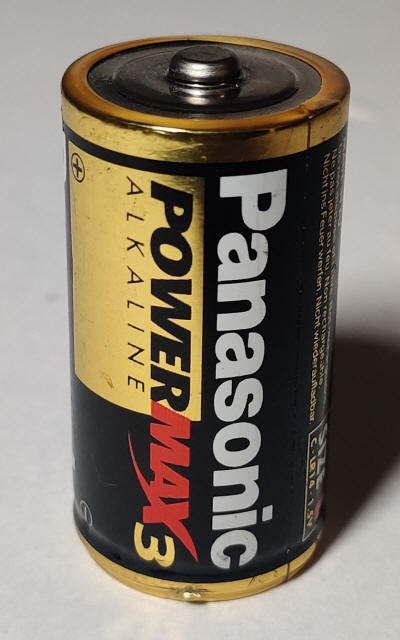 |
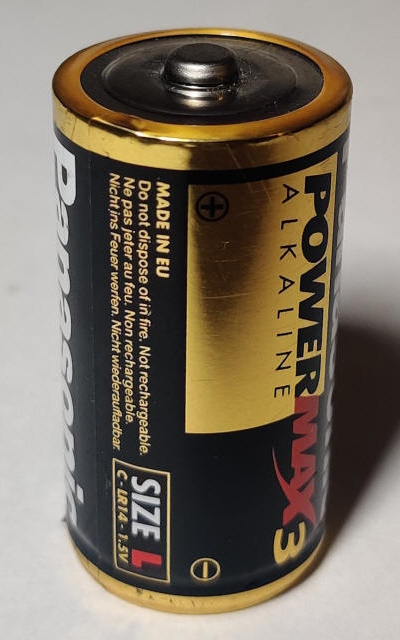 |
European market Panasonic PowerMax 3 from the early 2000s | |
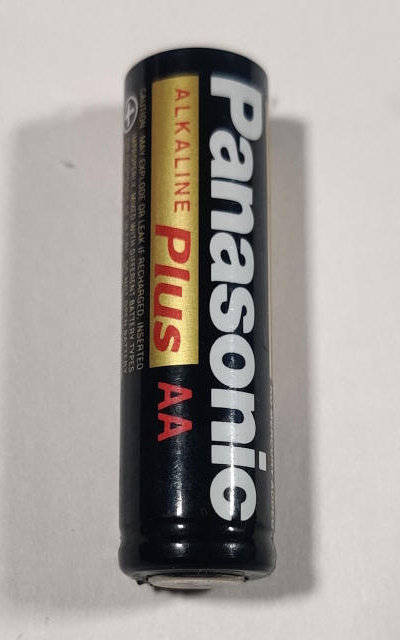 |
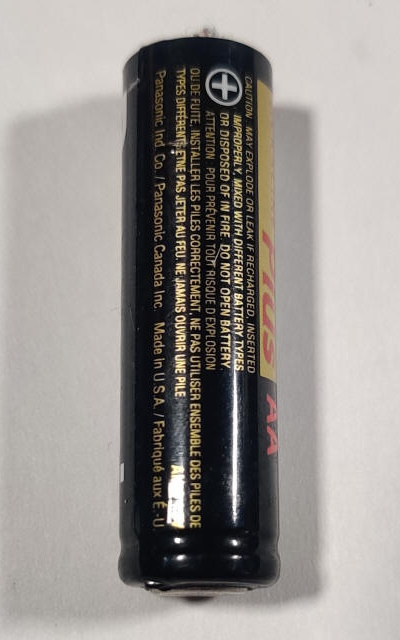 |
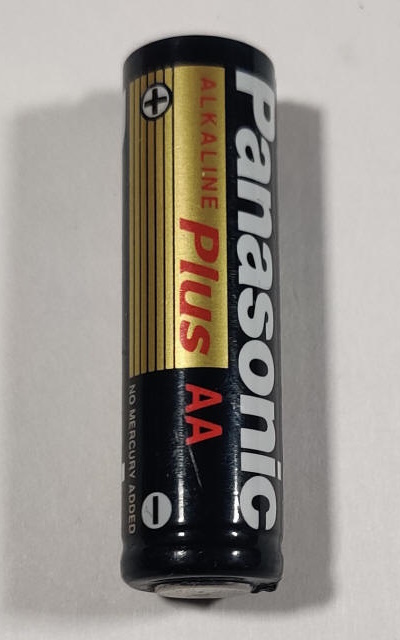 |
Earlier 2000s style of Panasonic Alkaline Plus | |
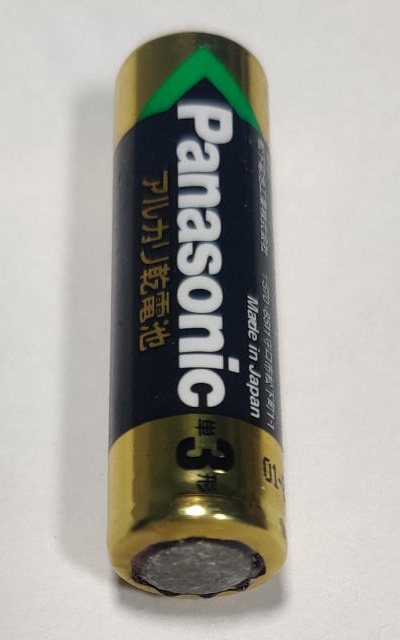 |
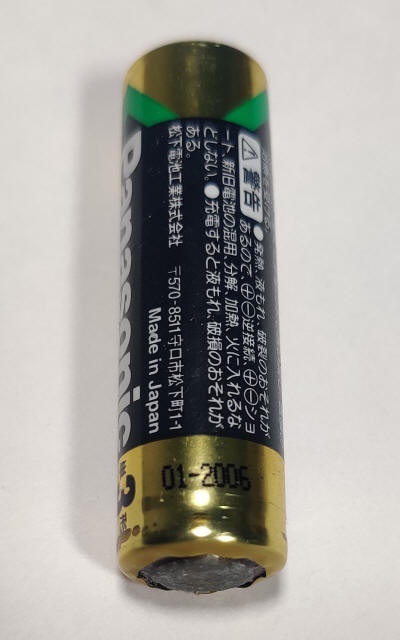 |
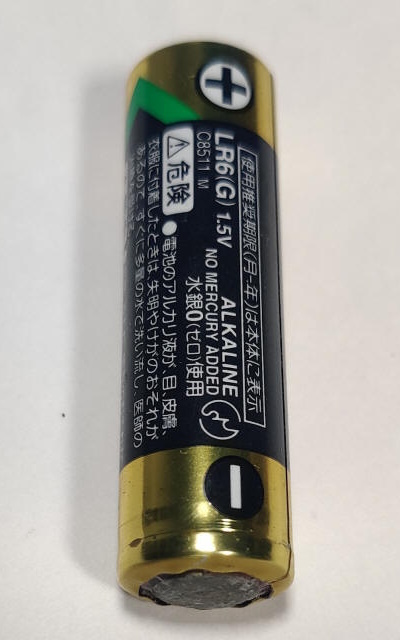 |
Early 2000s Japanese market Panasonic Alkaline AA | |
 |
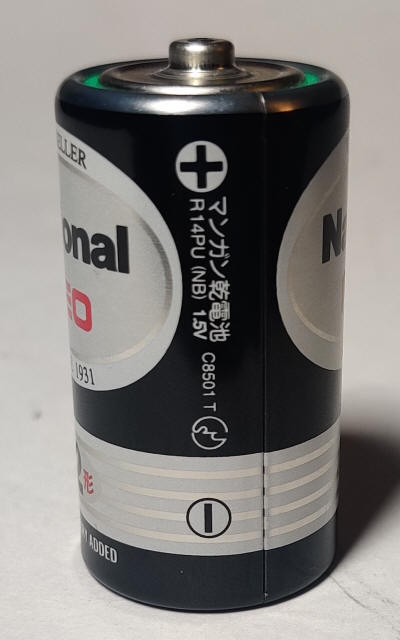 |
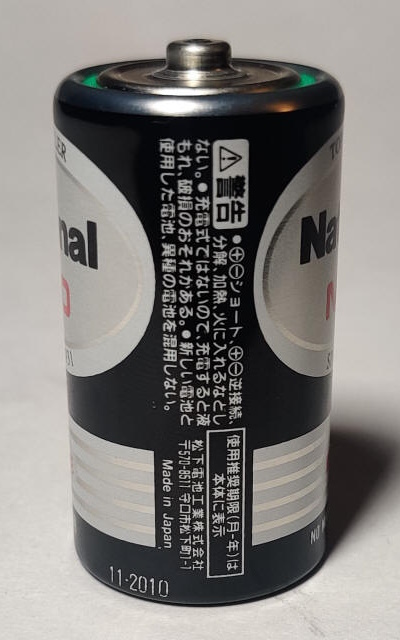 |
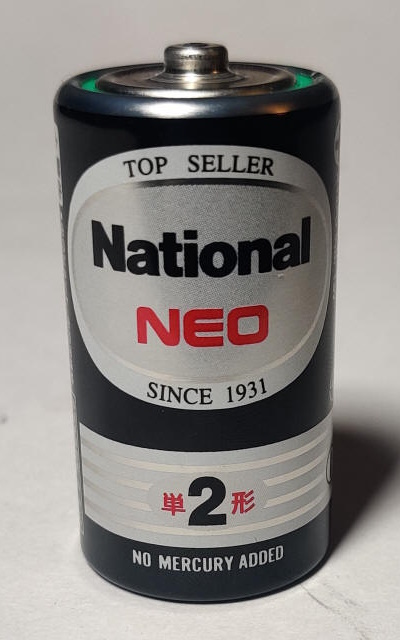 |
Late 2000s-early 2010s National Neo C battery, still made in Japan |
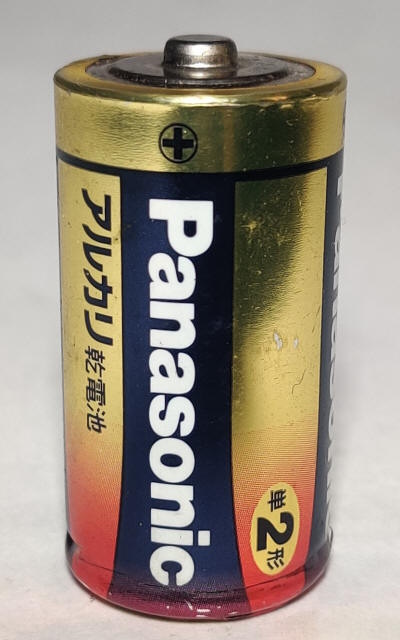 |
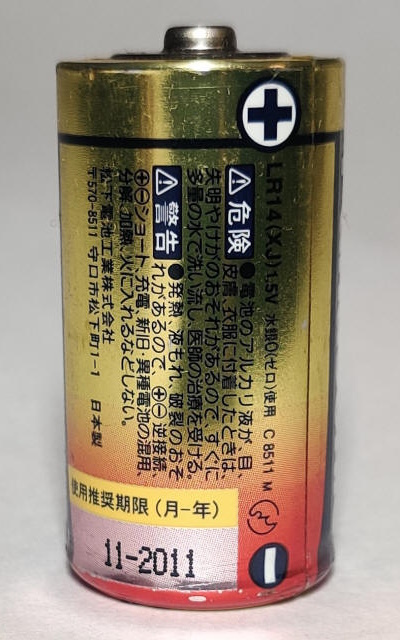 |
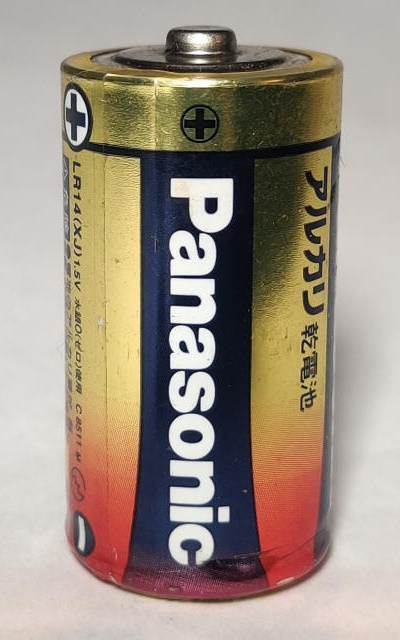 |
Late 2000s Japanese Panasonic Alkaline | |
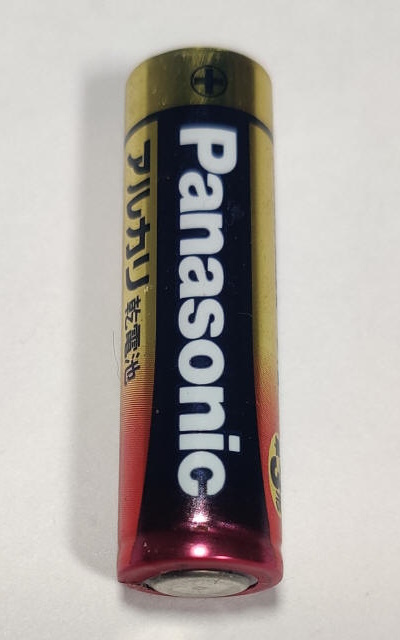 |
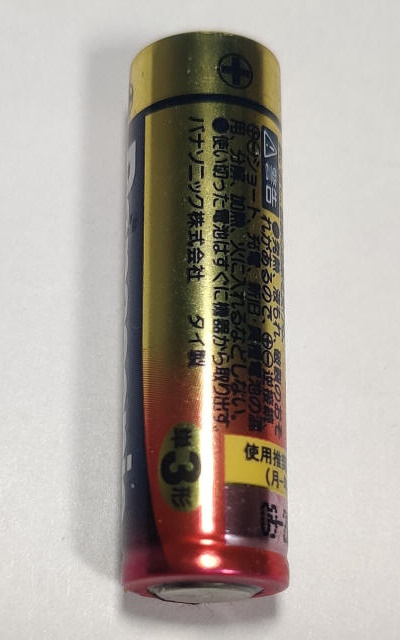 |
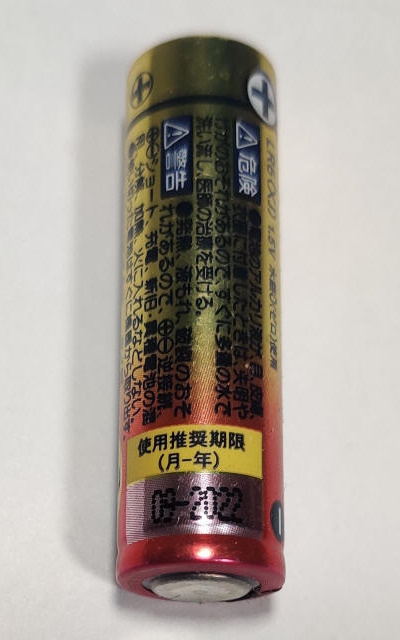 |
2010s Panasonic Alkaline AA | |
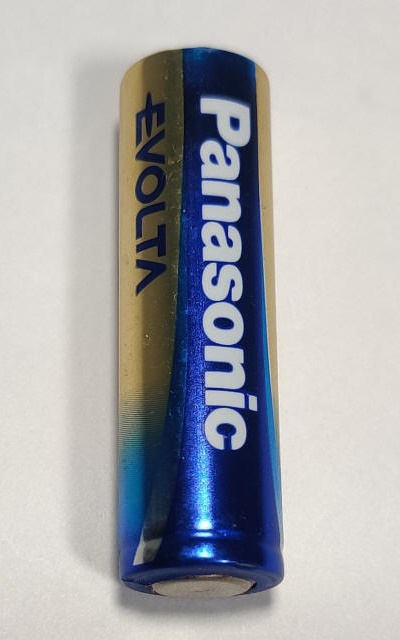 |
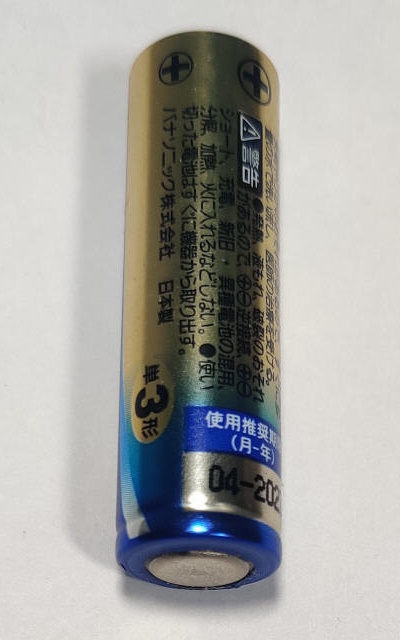 |
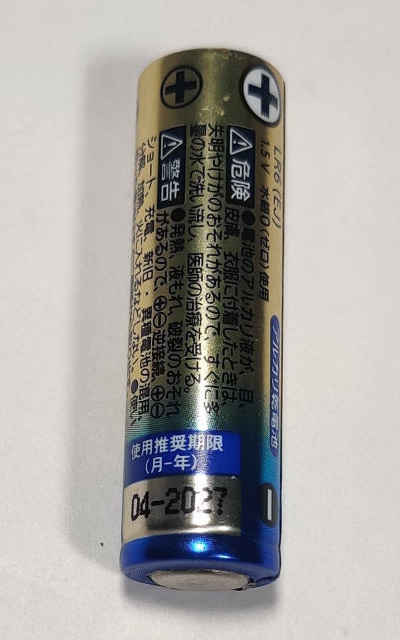 |
Panasonic Evolta AA from the earlier 2020s | |
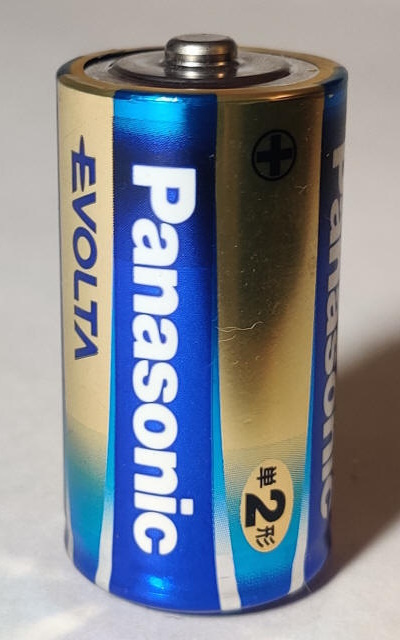 |
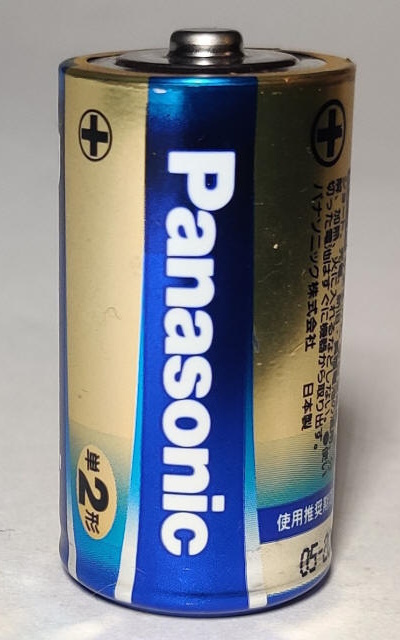 |
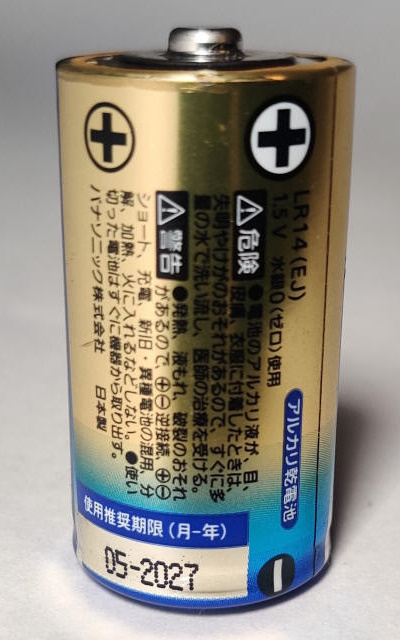 |
Late 2010s-2020s Japanese market long-life Panasonic Evolta C | |
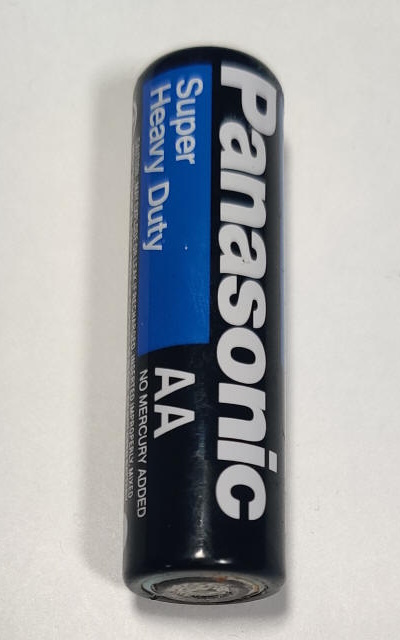 |
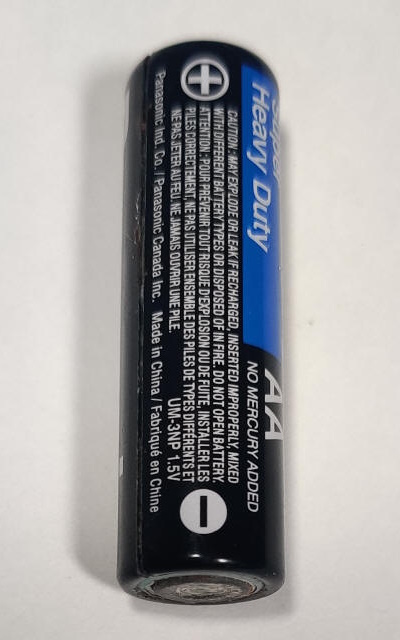 |
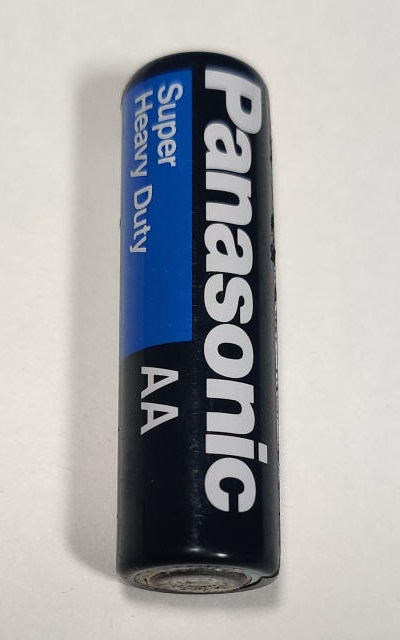 |
A Panasonic Super Heavy Duty AA carbon-zinc | |
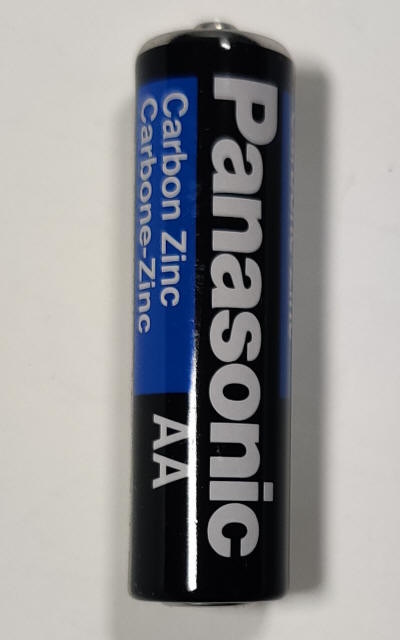 |
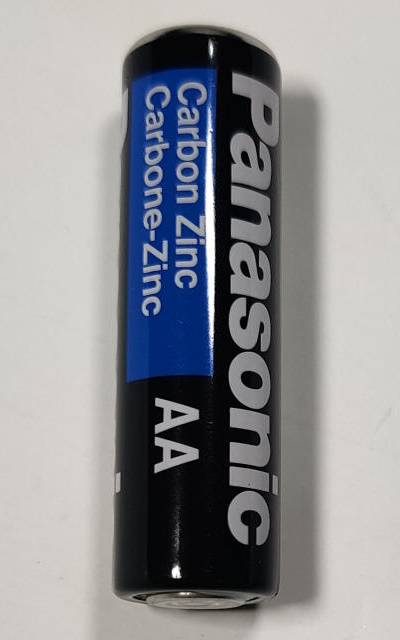 |
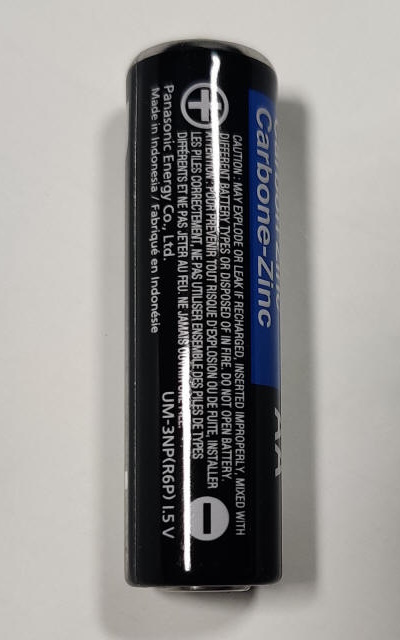 |
Panasonic carbon-zinc batteries are still sold in dollar stores in the US | |
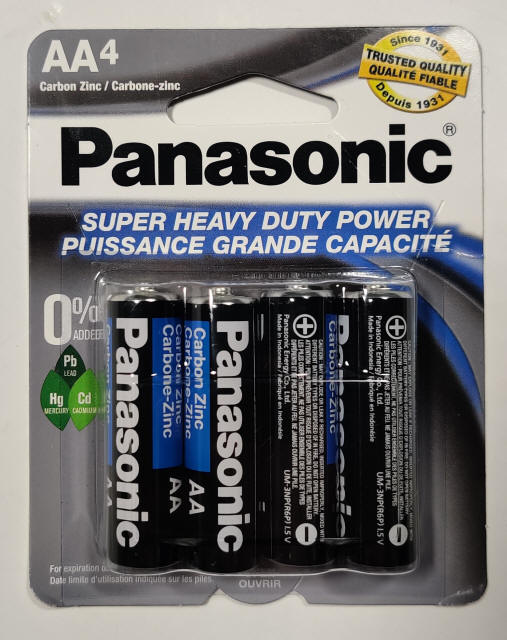 |
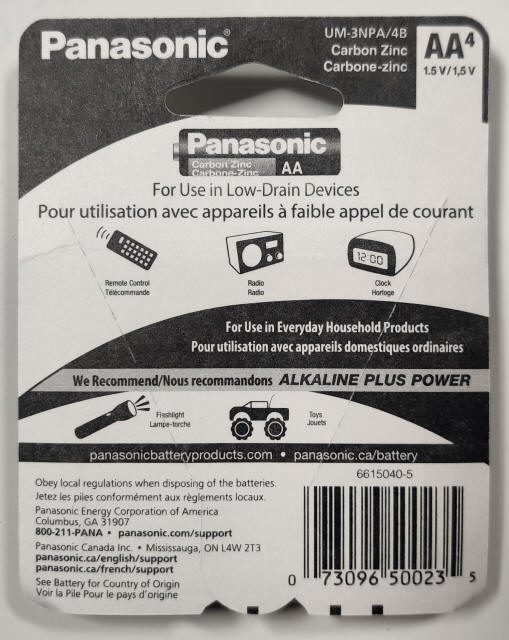 |
Packaging for the current Panasonic-branded carbon-zinc AAs. Four for $1.25 |
Duracell
Started by a scientist and businessman partnership in the 1920s as the P. R. Mallory Company, the Duracell brand was introduced in 1964 and went public in the late 1980s, being later bought by Gillette in the 90s and they in turn Procter & Gamble in the 2000s.
| Front | Side/Rear | Side/Rear | Description |
|
|---|---|---|---|---|
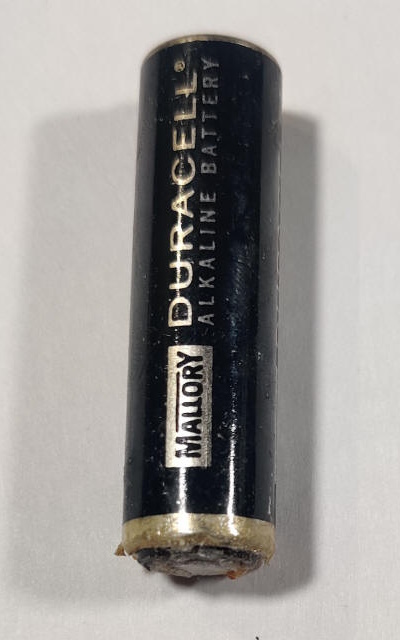 |
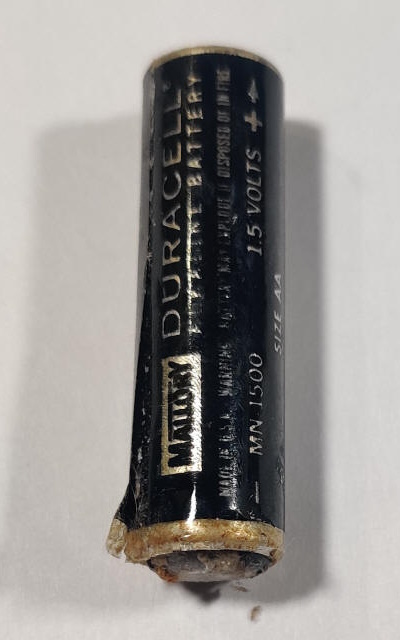 |
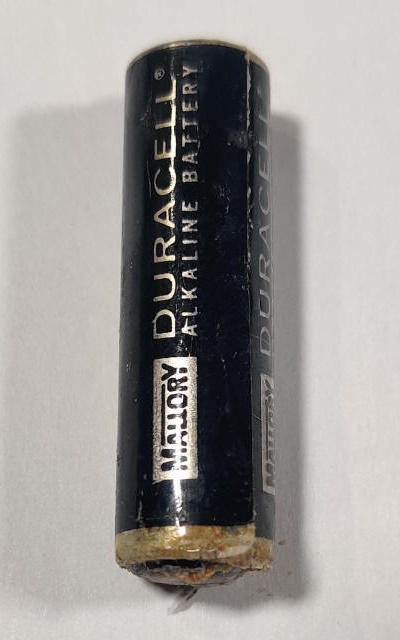 |
An old Mallory Duracell predating the "copper top" design. Its degrading, but I've held onto it because its the oldest one I've come across | |
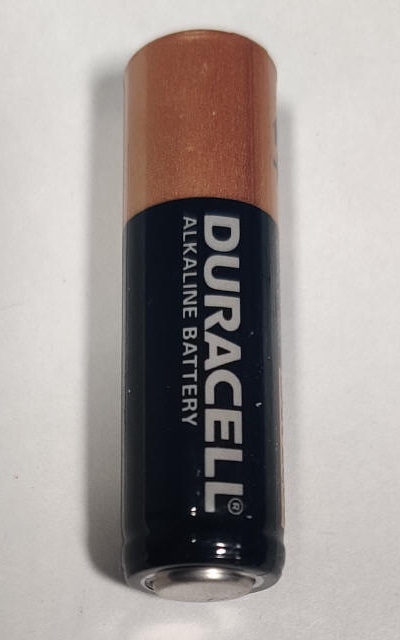 |
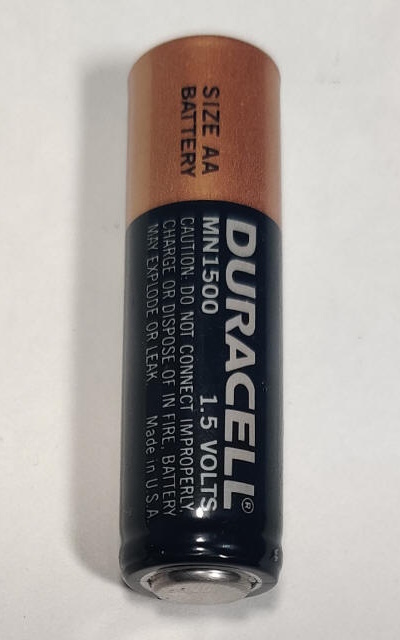 |
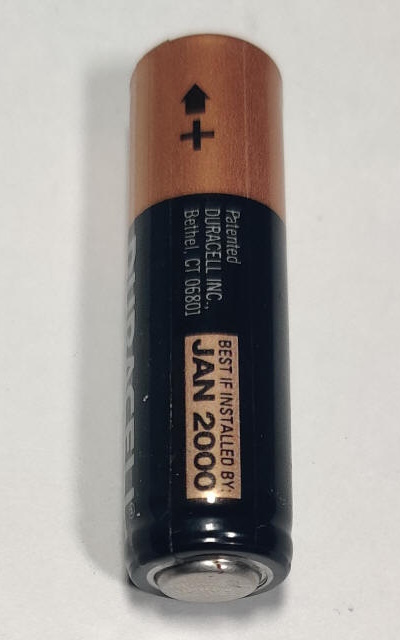 |
1990s Duracell AA marked as best installed by January 2000 | |
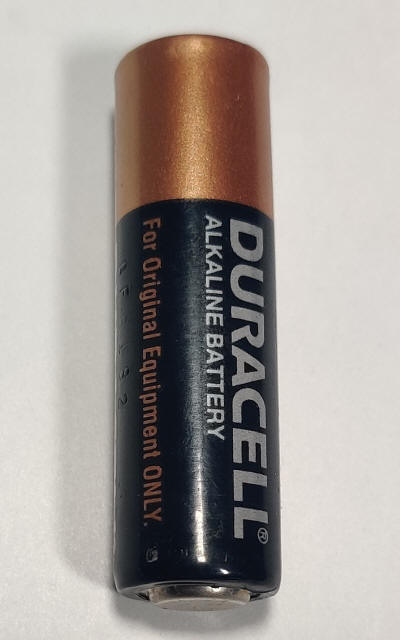 |
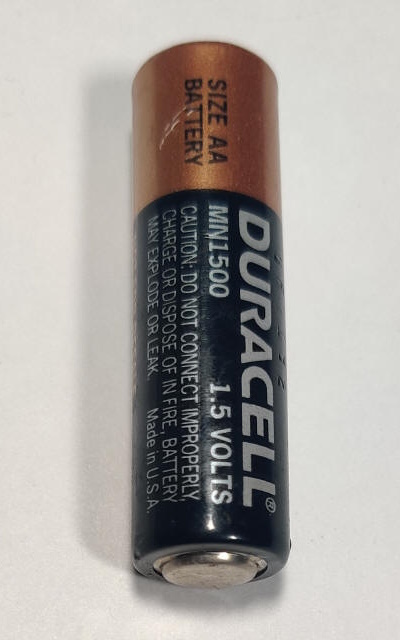 |
 |
An OEM version of the Duracell AA from a little bit after | |
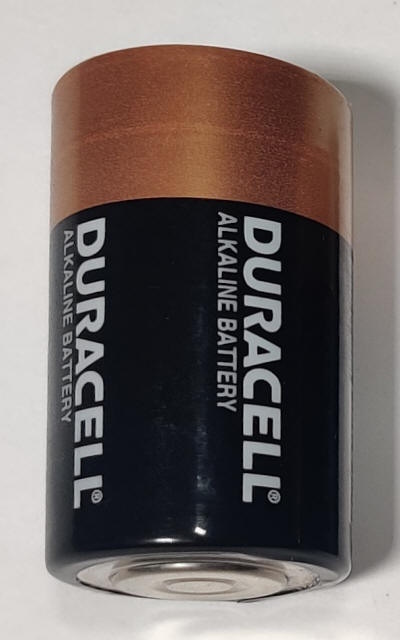 |
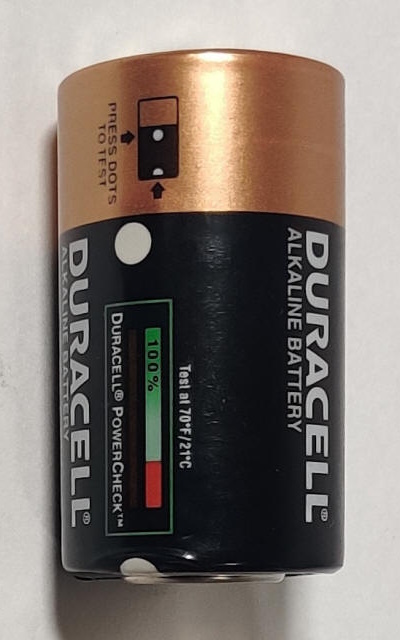 |
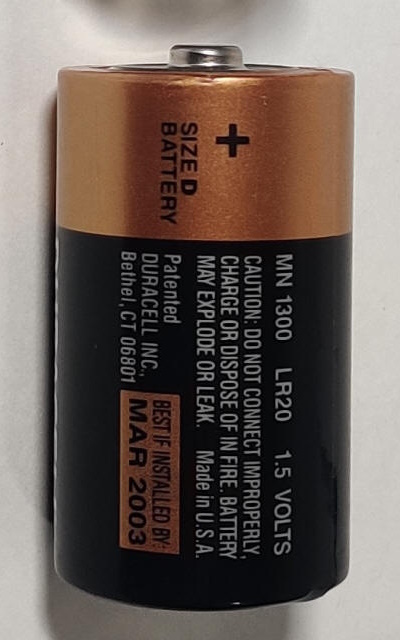 |
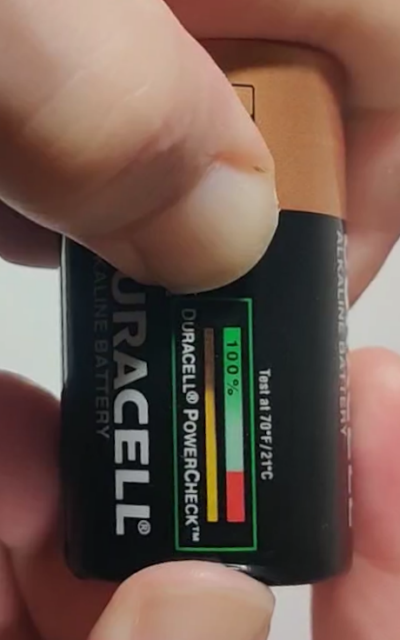 |
Late 1990s Duracell D battery with Powercheck bar - this was a
built-in way to test if the battery still had capacity Powercheck video |
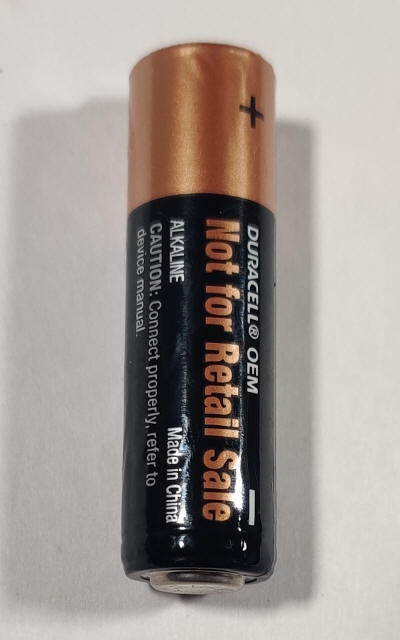 |
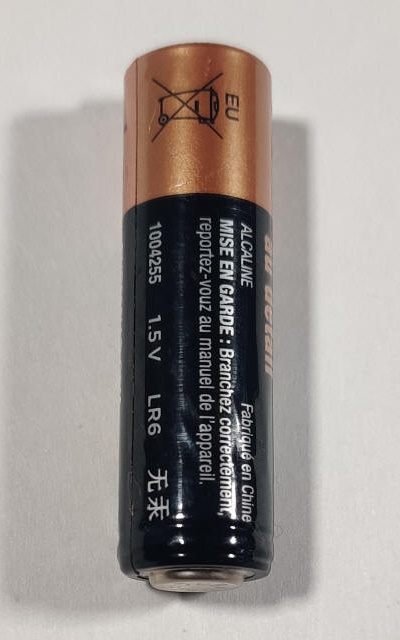 |
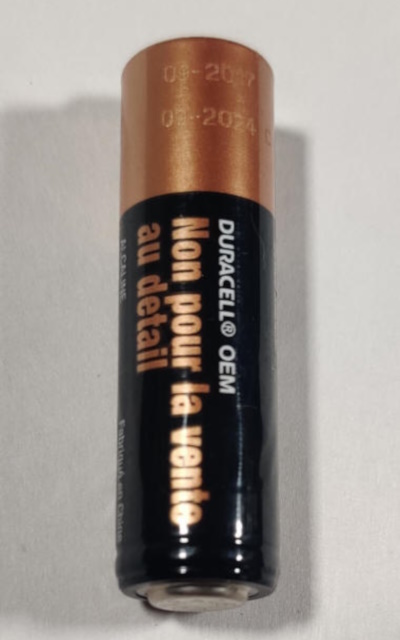 |
An OEM Duracell battery included with some product circa 2017 | |
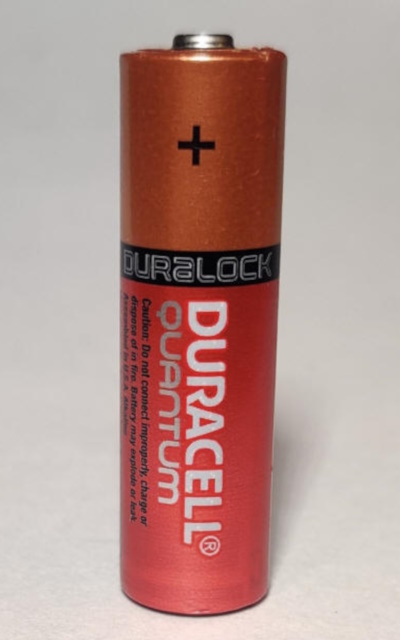 |
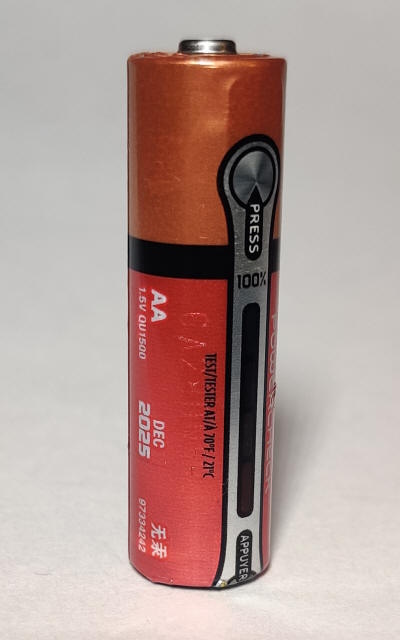 |
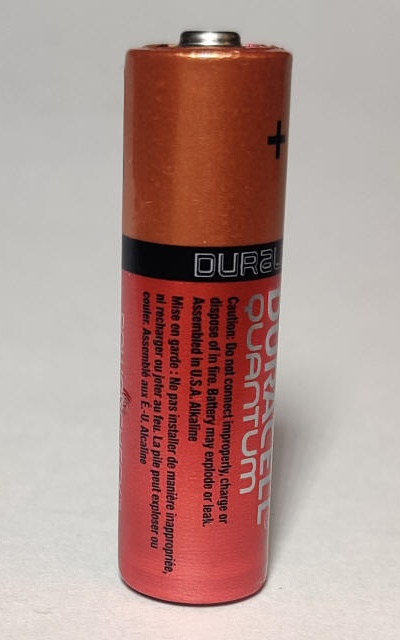 |
Duracell Quantum, first released in 2013, often (always?) still feature the Powercheck meter |
Rayovac
Originally started as the French Battery Company in 1906 and renamed Ray-O-Vac in 1930 following the rise of vacuum tubes. In the early 2000s the brand diversified before going bankrupt in 2009 and eventually selling the battery division to Energizer in 2018.
Eveready/Energizer
The Eveready Battery Company was formed in New York in 1905 as the American Ever Ready Company selling flashlights and batteries. In the 1980s most Eveready batteries were renamed Energizer and the company was sold and eventually spun off independently as Energizer Holdings in 2000, acquiring Rayovac in 2018.
Meijer
Meijer is a chain of supercenter stores based primarily in Michigan and the midwest that sells groceries, electronics, housewares, clothing, and other common goods.
| Front | Side/Rear | Side/Rear | Description |
|
|---|---|---|---|---|
 |
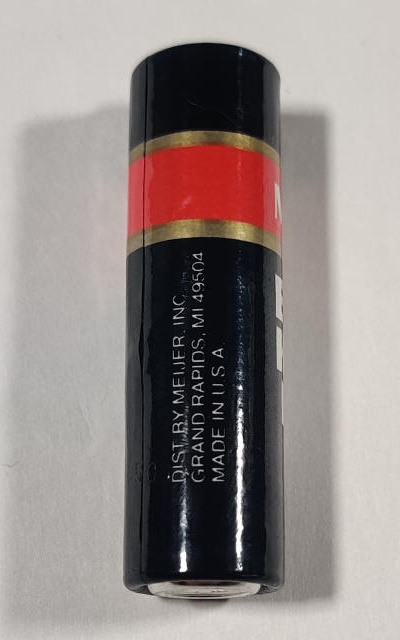 |
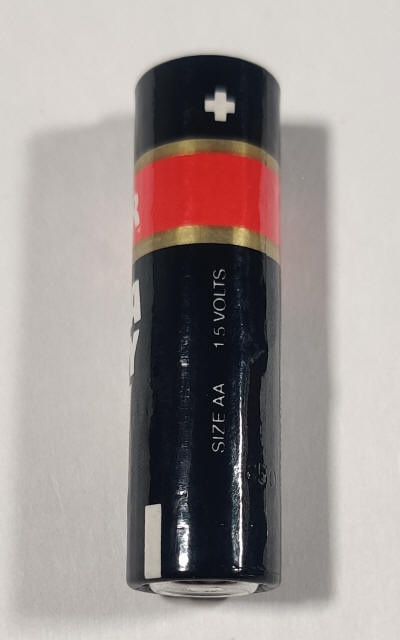 |
Meijer Extra Heavy Duty AA found in a circa 1985 Robotix toy | |
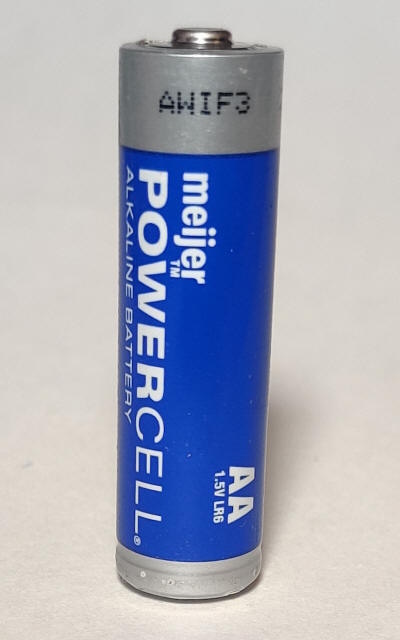 |
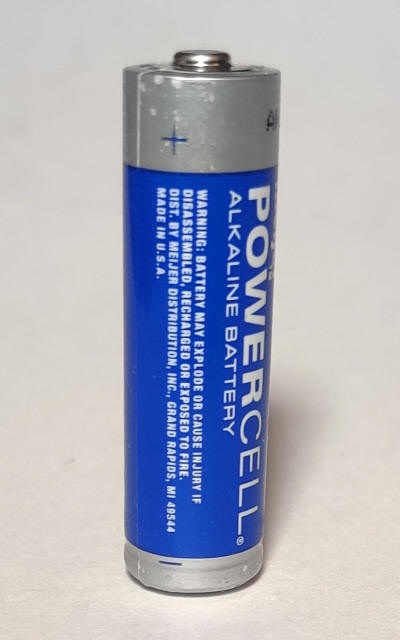 |
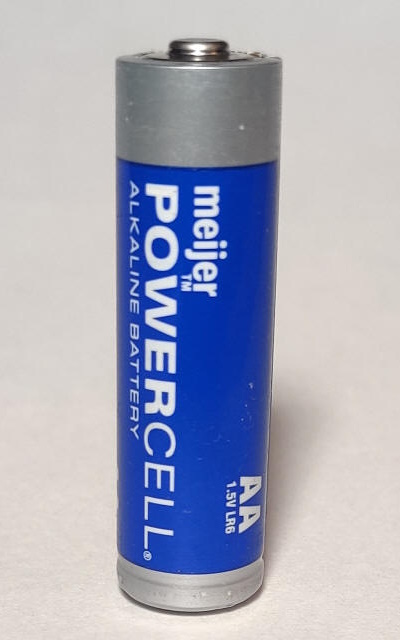 |
The 2000s Meijer Powercell Alkaline design I remember buying often |
"Smoke alarm" 9 volts
Zinc-Carbon nine volt batteries from random brands, often included with or found inside smoke detectors
Eneloop
and Nickel-Metal Hydride (NiMH) rechargeables
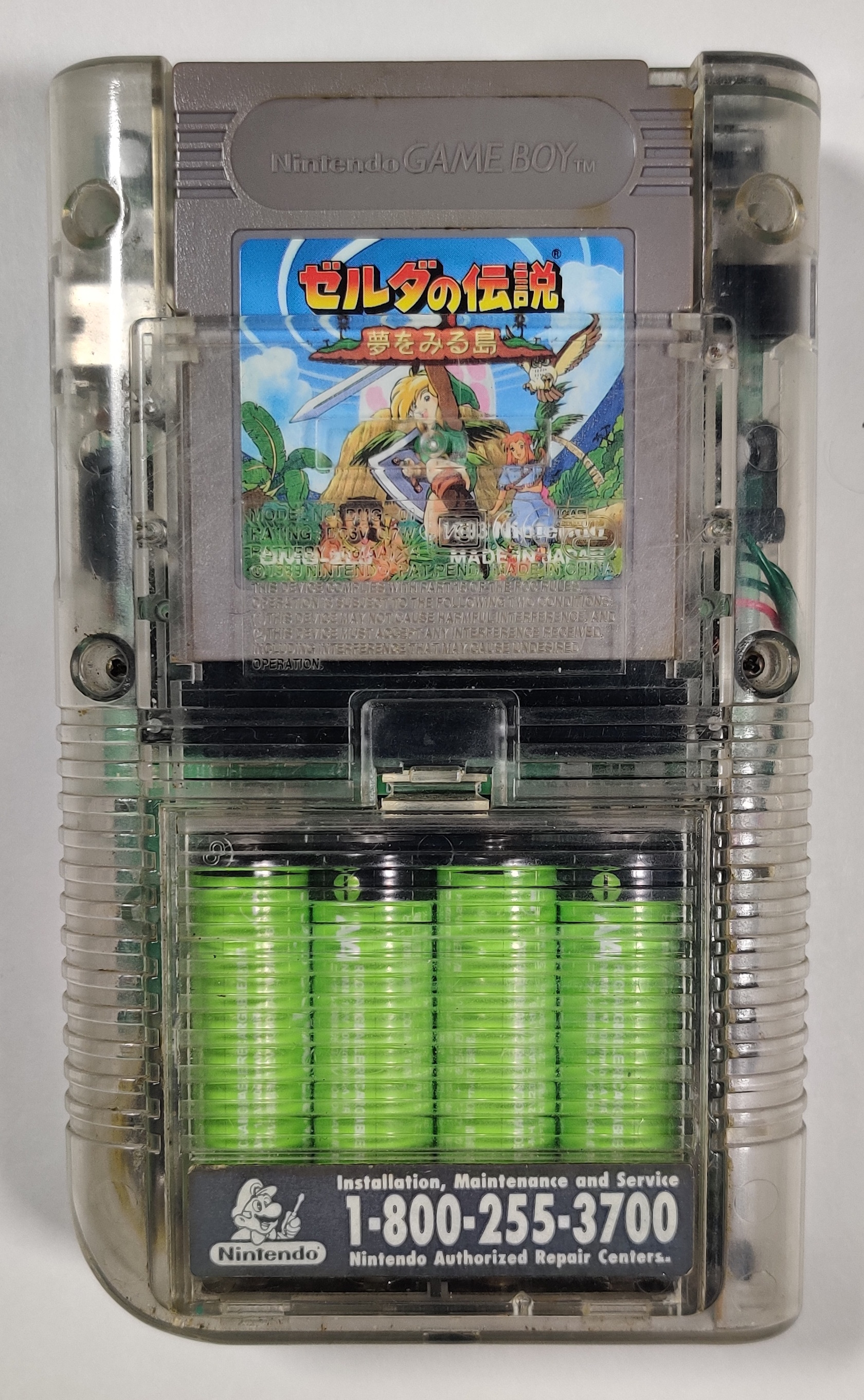
First developed by Sanyo and Tomy as "Every Denchi" (エヴリデンチ) specifically for use in toys and released in 2003 (because apparently all roads lead to Tomy...), Sanyo developed the "modern" consumer rechargeable battery in the 2000s and released the first generation of Eneloop nickel-metal hydride type rechargeables batteries in 2005. In late 2008 Panasonic announced plans to acquire a controlling share of Sanyo and bring it in as a subsidiary. Eneloop batteries were apparently the last product still sold under the Sanyo name in Japan for a time, with other products being discontinued or rebadged as Panasonic before Eneloops were integrated into Panasonic's battery range alongside their existing Evolta brand. In addition to slightly increased capacity over the generations as well as larger C and D types with appropriate capacities they all feature pretty good charge retention and typically come pre-charged. I remember using nickel-cadmium style rechargeables as a kid with toys that chewed through batteries (mostly Rokenbok) and nowadays I pretty much only use these NiMH rechargeables in my toys and devices. Passive diameter-adapters are sometimes included with sets of these batteries to let them power C and D-cell devices (the C and D sizes are only sold directly to some markets, although they can be bought online). I balk at the prospect of paying for one-time-use batteries to play with in my own toys and would much rather employ a small fleet of these batteries and chargers.
Different generation can be differentiated by their product code:
| Generation | Code | Notes |
|---|---|---|
|
First (November 2005) C and D introduced Spring 2007 |
HR-#UTG | 1 for D, 2 for C, 3 for AA, 4 for AAA. Only generation of C and D cells - and only sold in some regions |
|
Second (2009) First lite and pro cells |
HR-#UTGA HR-#UQ (lite) HR-3UXW (pro, AA only) |
C and D variants for the lite and pro cells are not produced, and the AAA pro did not appear until their second generation |
|
Third (November 2011) Second generation pro cells |
HR-#UTGB HR-3UPT (plus, AA only) HR-#UWXB (pro) |
Several colors as well as several Disney themed designs were produced |
|
Fourth (2013, Panasonic production begins) Third generation pro cells Second generation lite cells |
HR-#MCC BK-#LCC (lite) BK-#HCCA (pro) |
E appended in Europe, A appended in America Updated testing standards in 2015 |
|
Fifth (2022) Fourth generation pro cells |
HR-#MCD BK-#HCD (pro) |
AAA now 800mAh, AAA now 2000 mAh |
The eneloop101 website has a ton of information about Eneloop batteries and related products.
Other NiMh batteries
In the last few years I have seen more retail and store brands selling NiMH rechargeables and they can be bought online in many sizes and combinations - and from many different brands.
Really, the only downside to these batteries in use is that they operate at a lower voltage than regular AAs, hovering around 1.2 volts instead of the 1.5 specified by traditional batteries of these types. Many devices will operate down to 1.2 volts - this is closer to the typical "cutout" voltage (1v) of traditional batteries, the point at which their voltage starts to drop off more rapidly with current draw - but some devices will not always work on these batteries. More complex devices that are particularly sensitive to input voltage do not always work (or believe that the batteries are not at full capacity - my Nintendo Wii remotes report three out of four blinking charge indicator LEDs when turned on with fresh Eneloops) and simple motorized toys including, indeed, Plarail and many other battery-powered trains will run slower as their output is directly related to input voltage. Apparently, due to concerns over heat generation, NiMh batteries are not recommended in some motorized model kits as well as Mini 4WD competitions. They also apparently release a small amount of gas when fully charged or discharged, so they are not recommended for use in airtight battery compartments. They are still considered safer than lithium ion batteries, which are not usually used as replacements for conventional dry cells.
